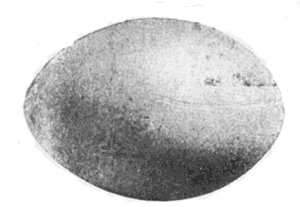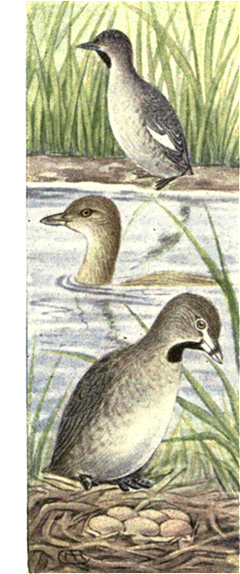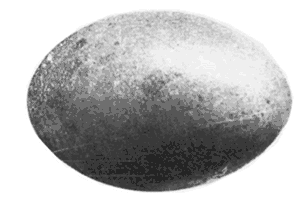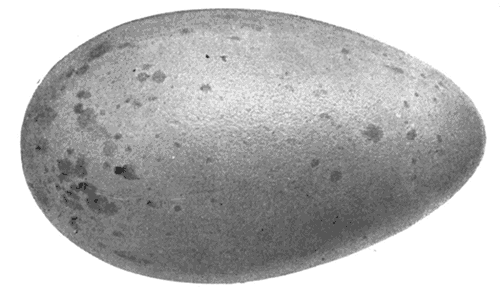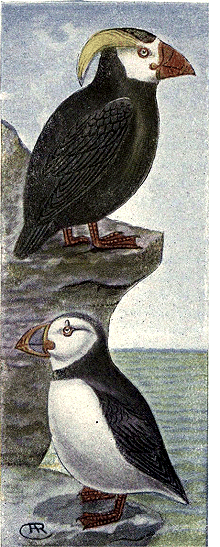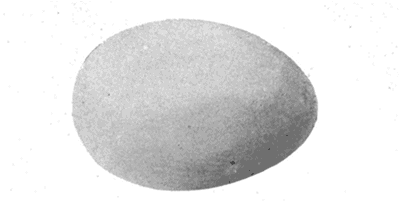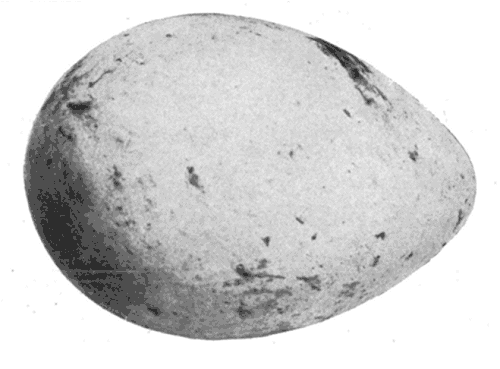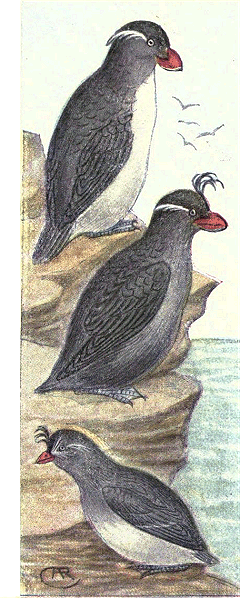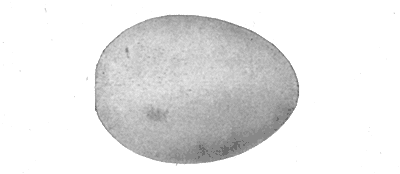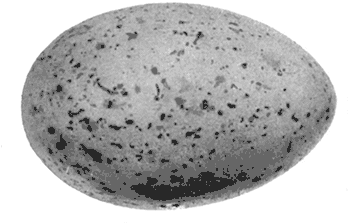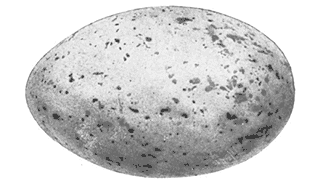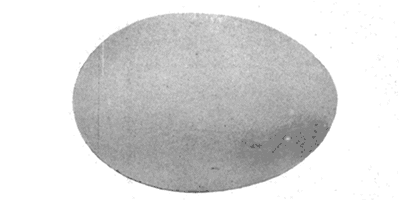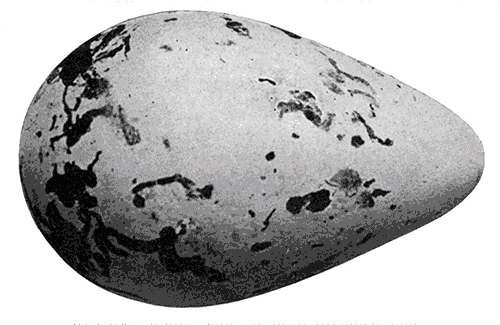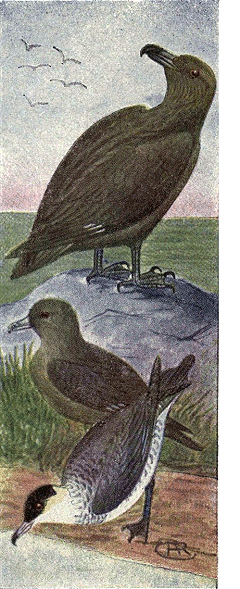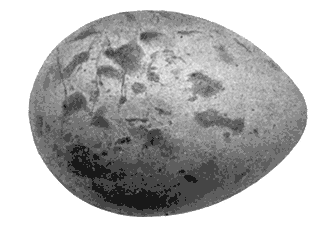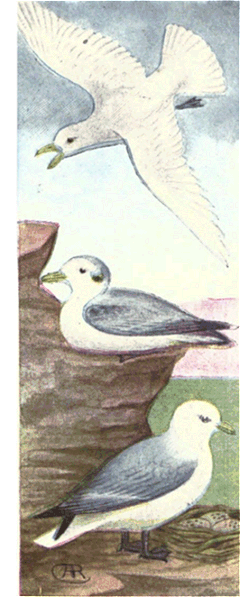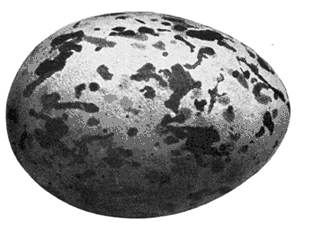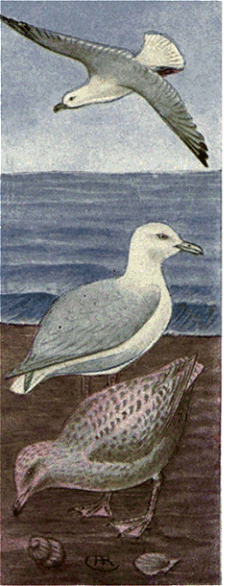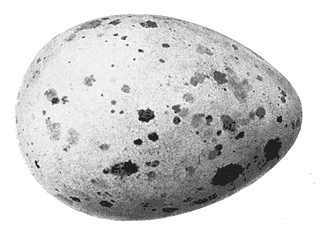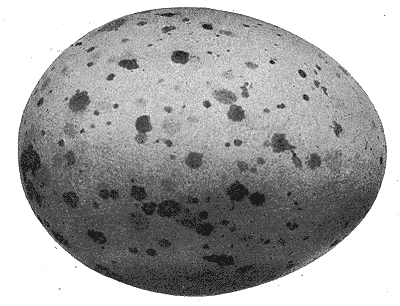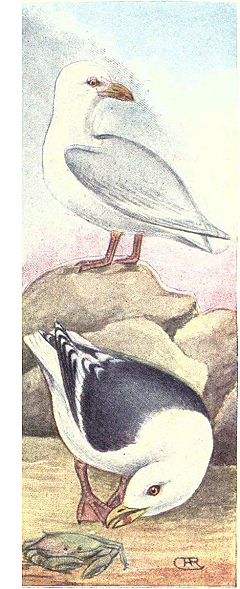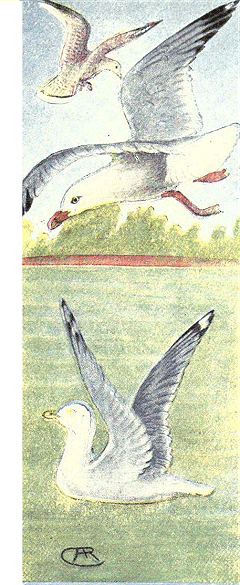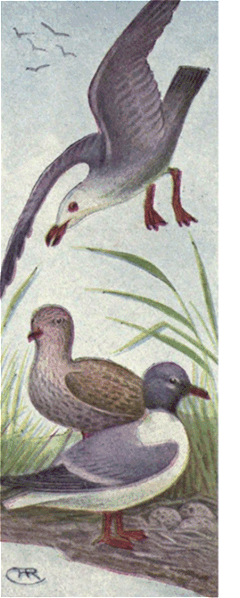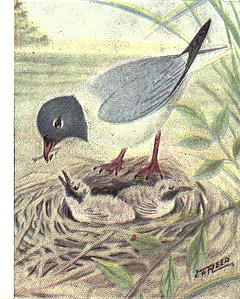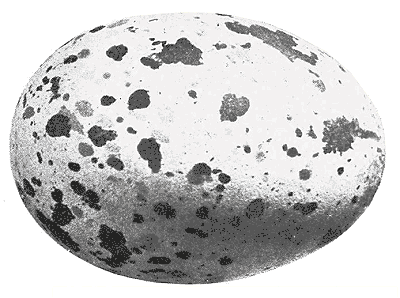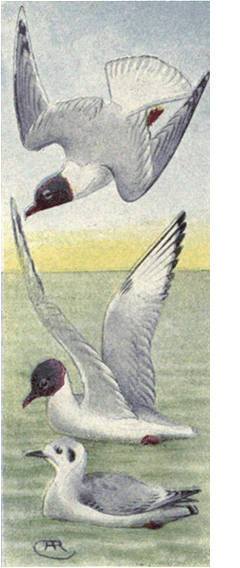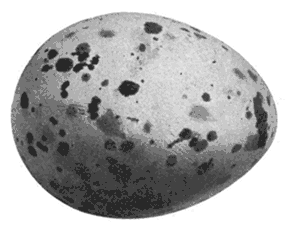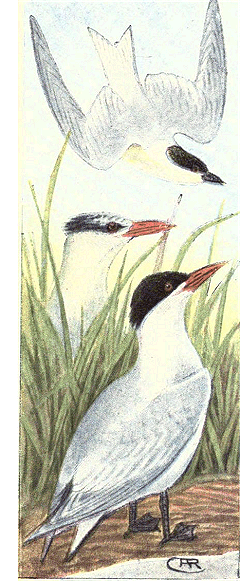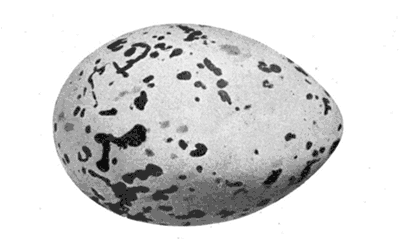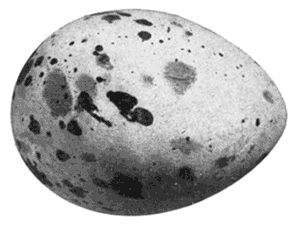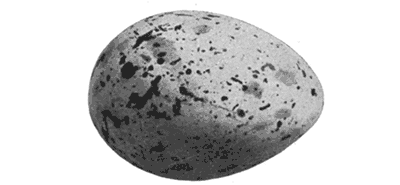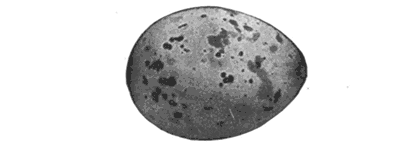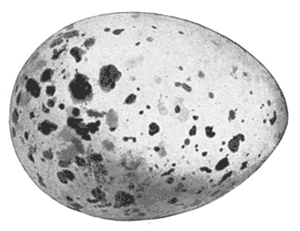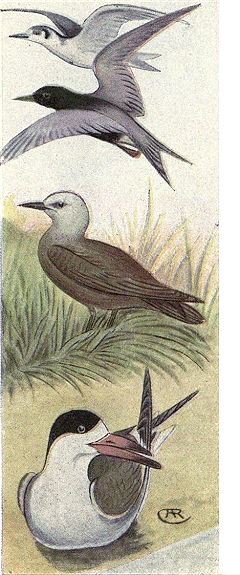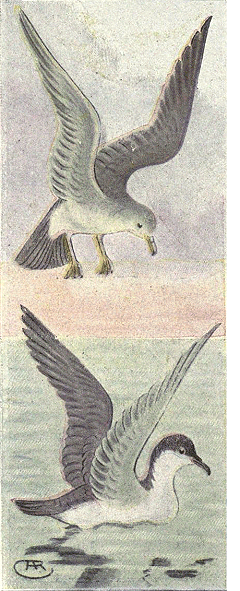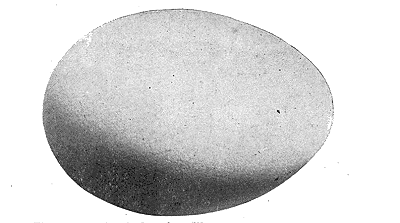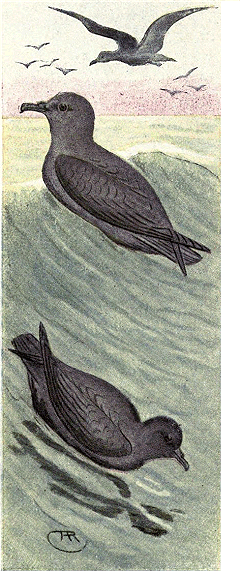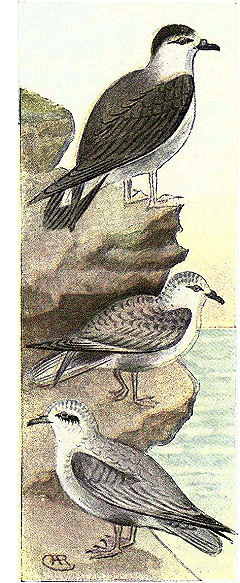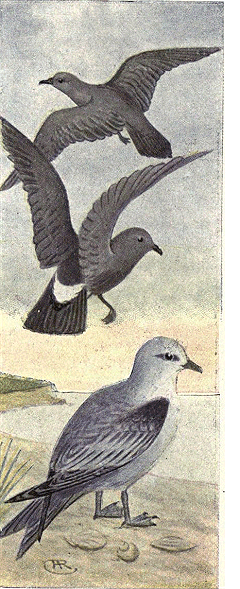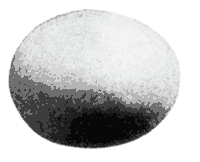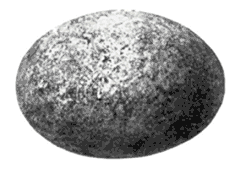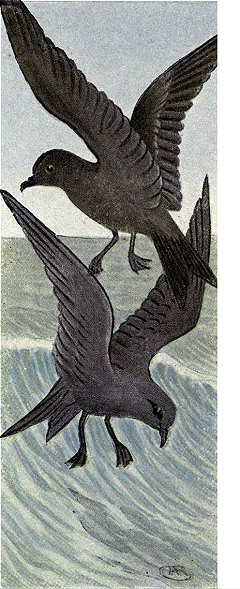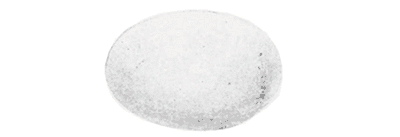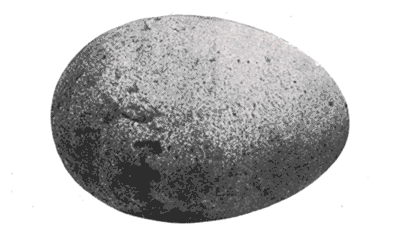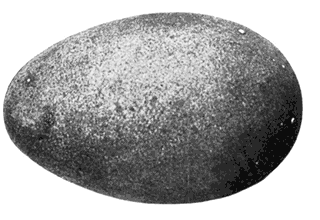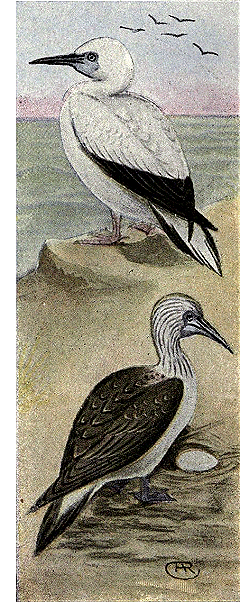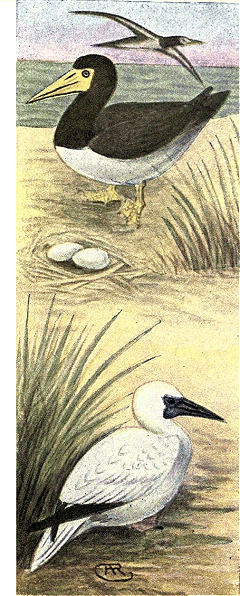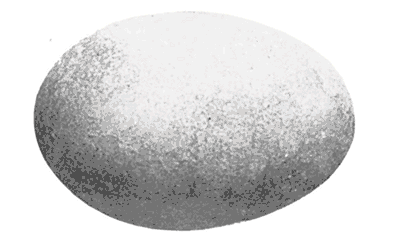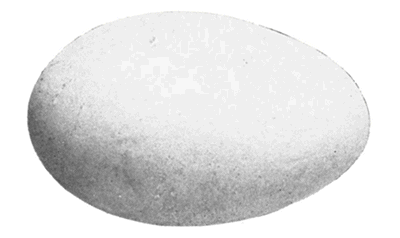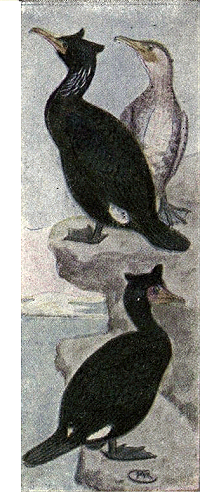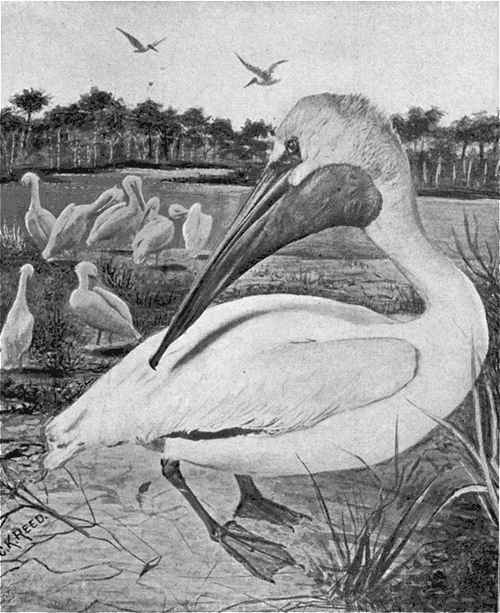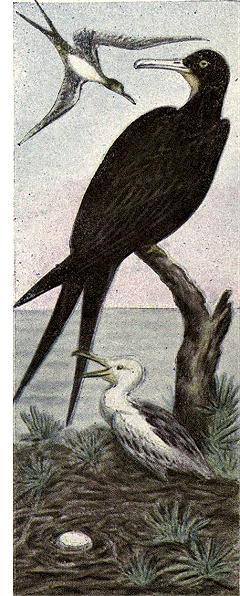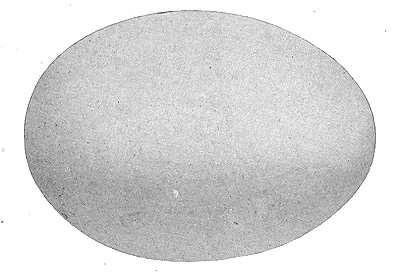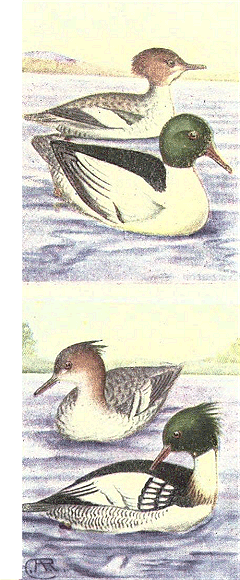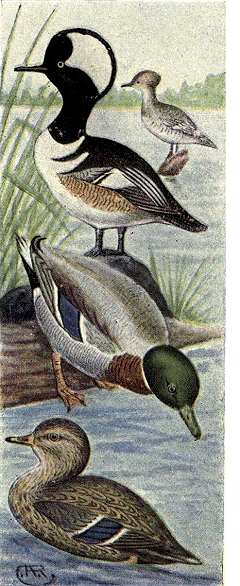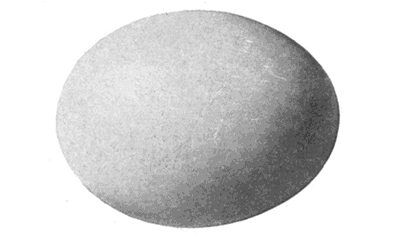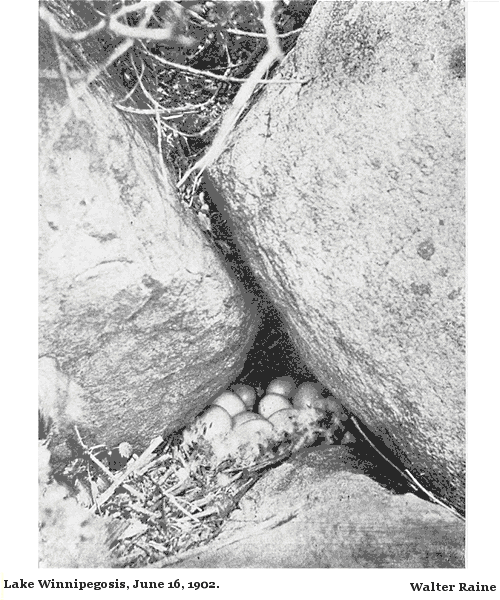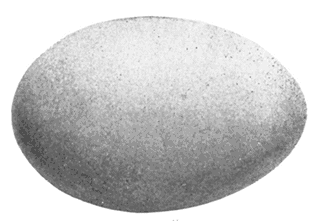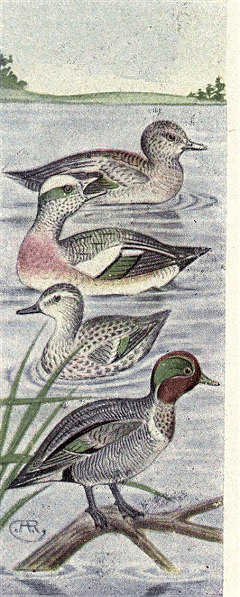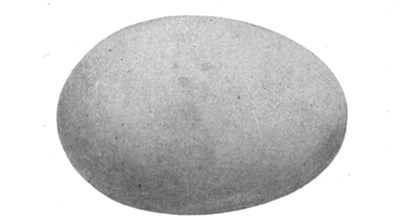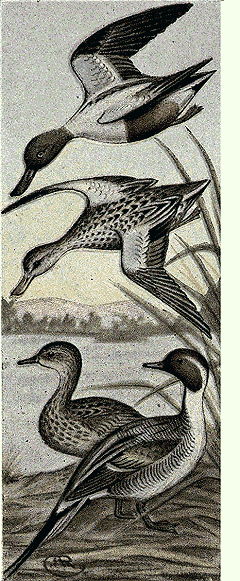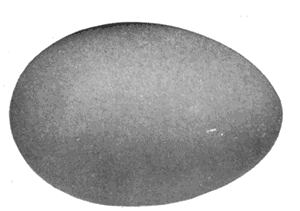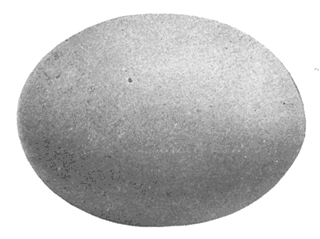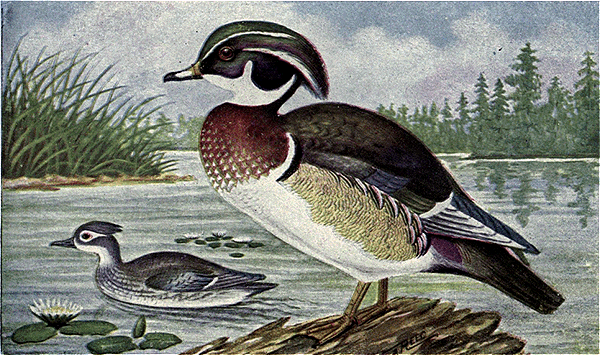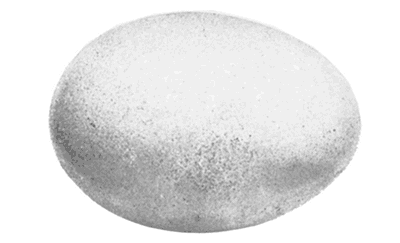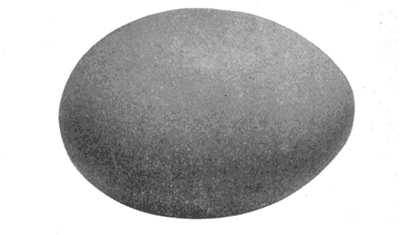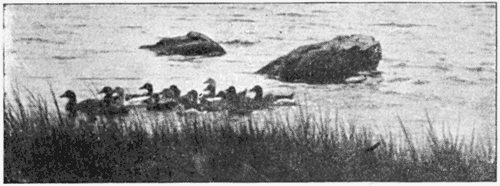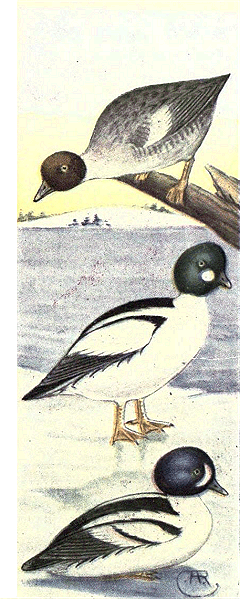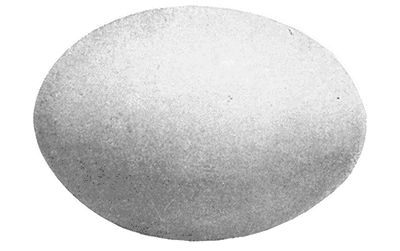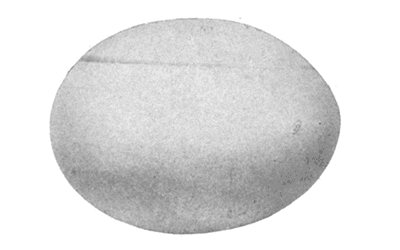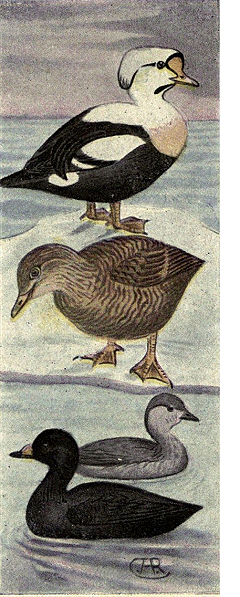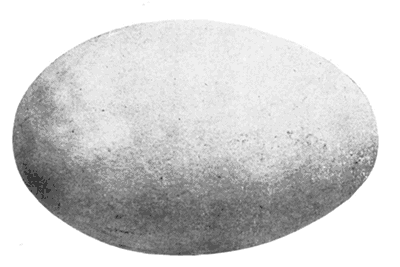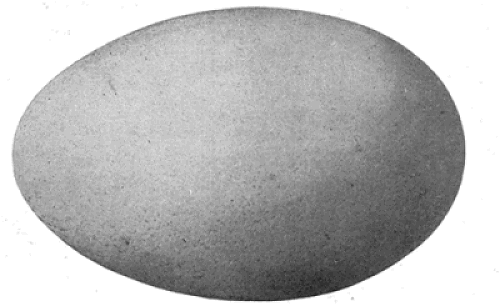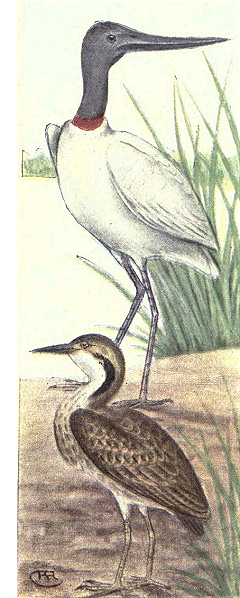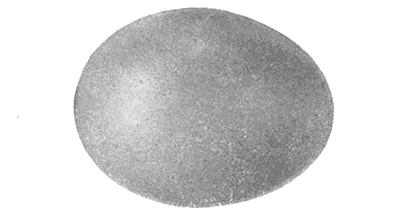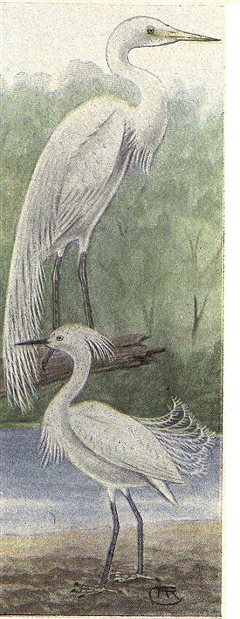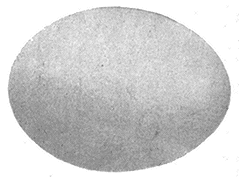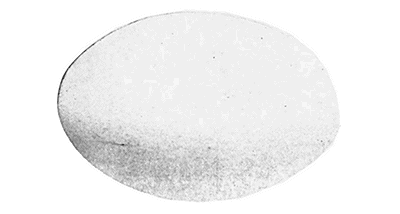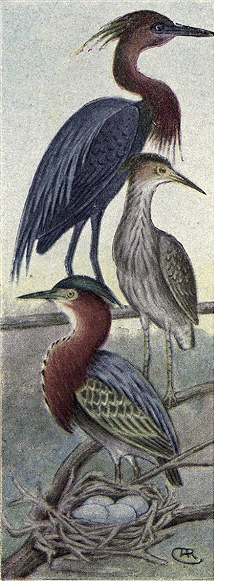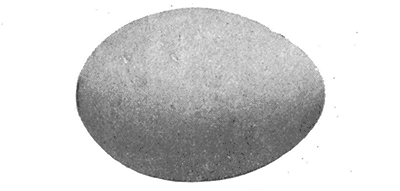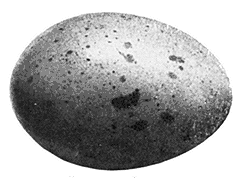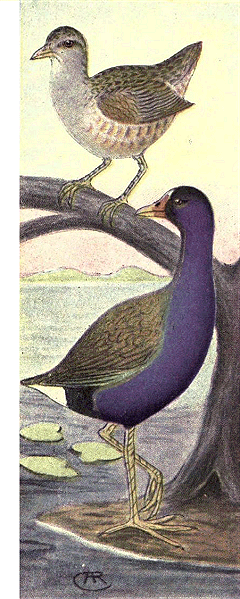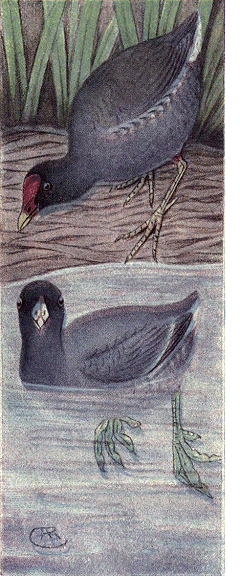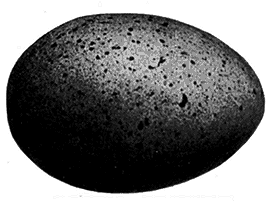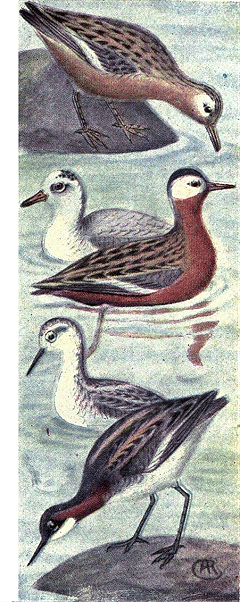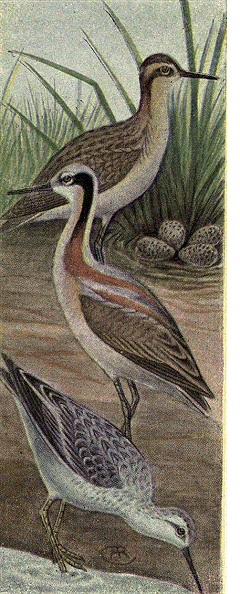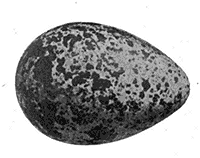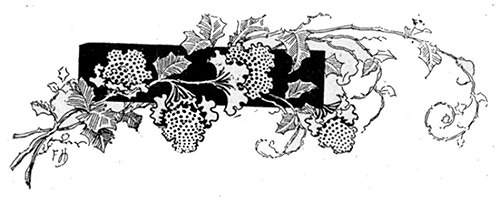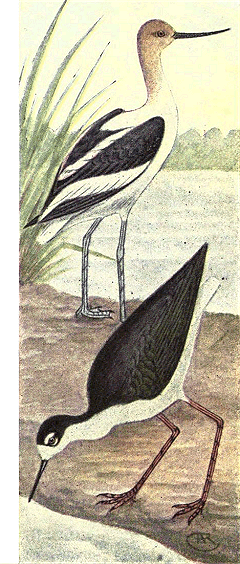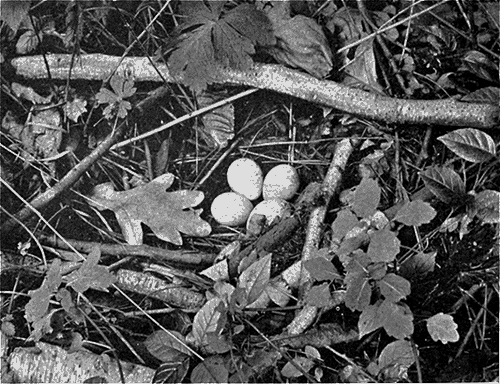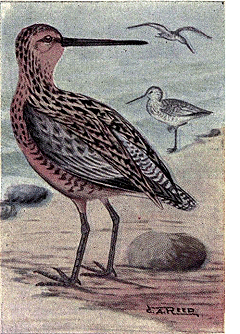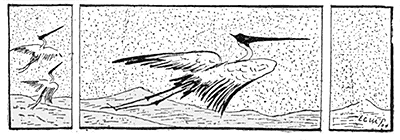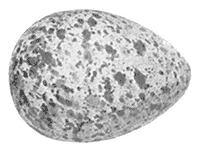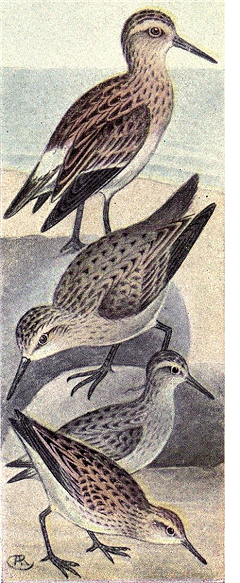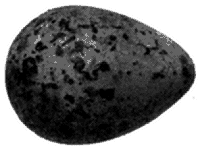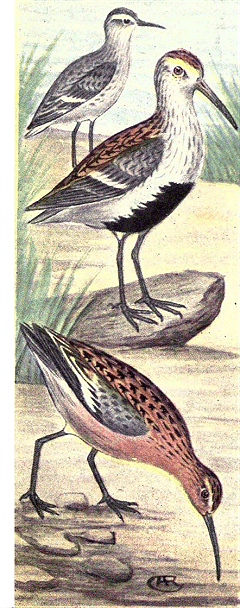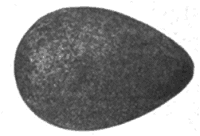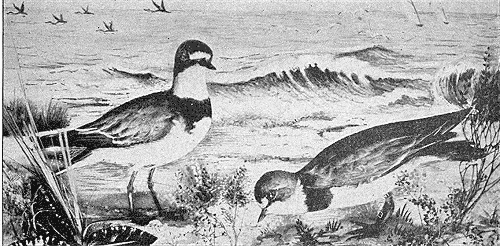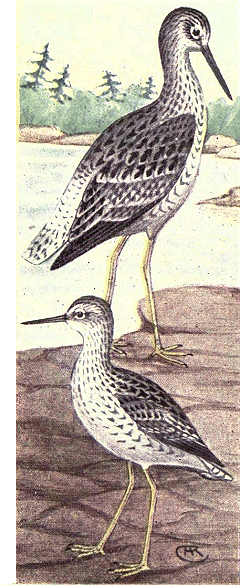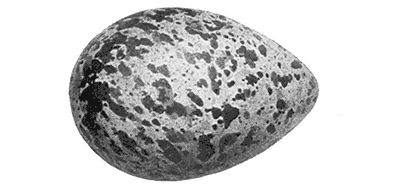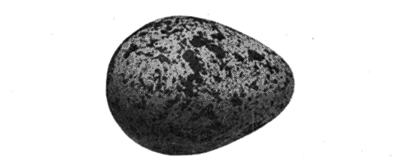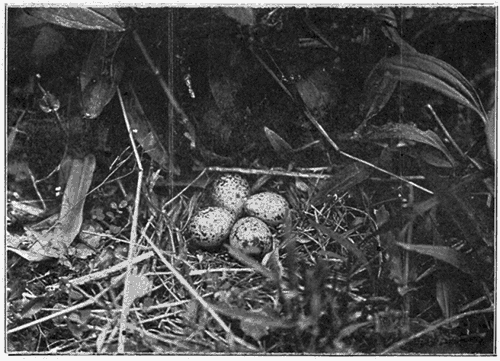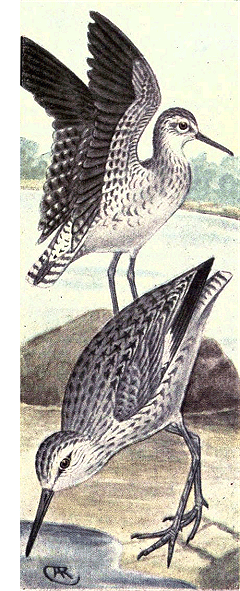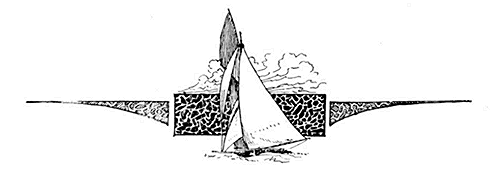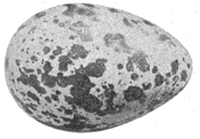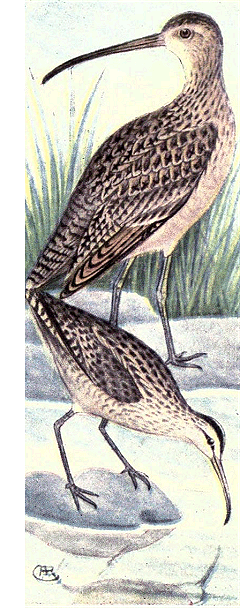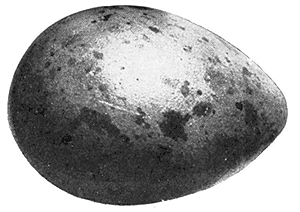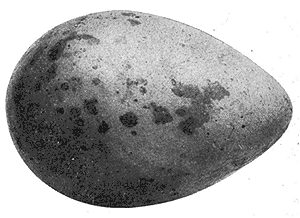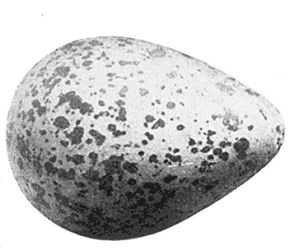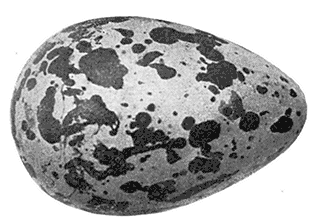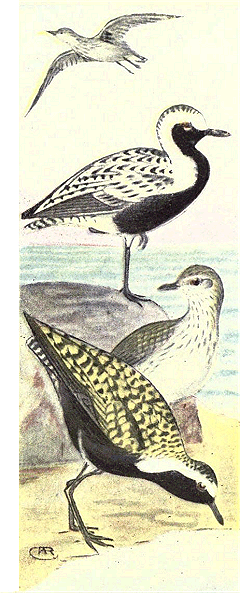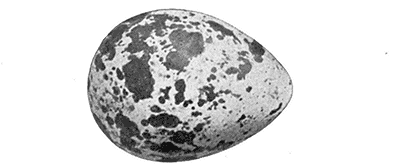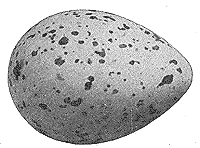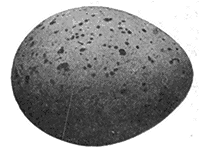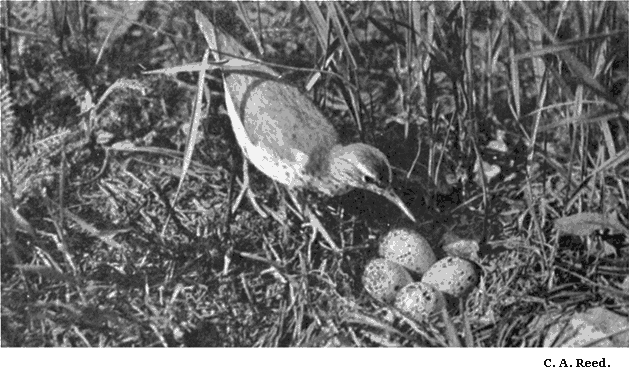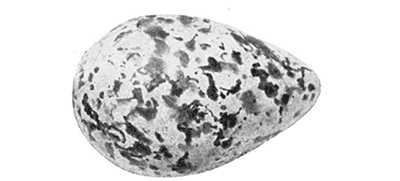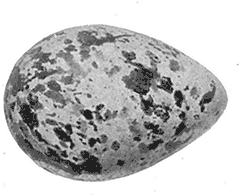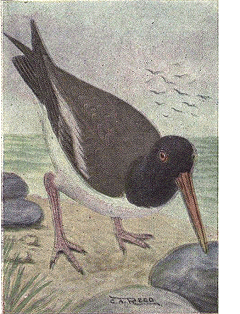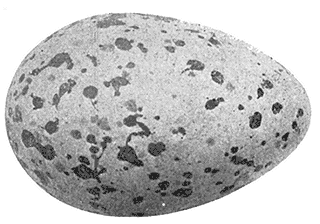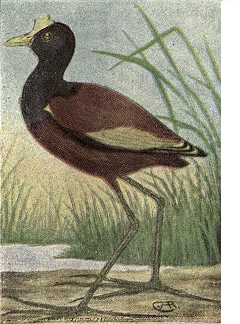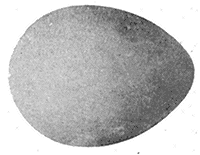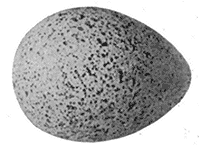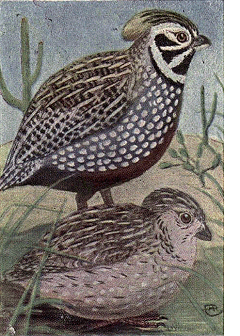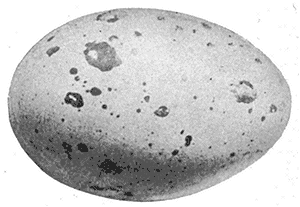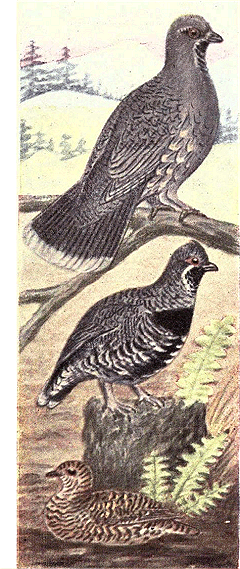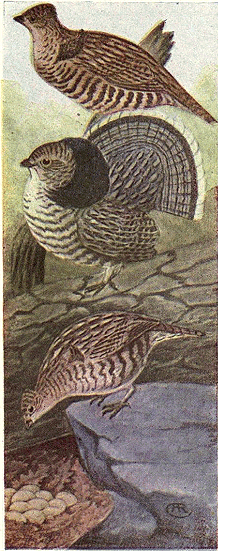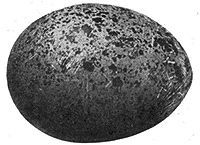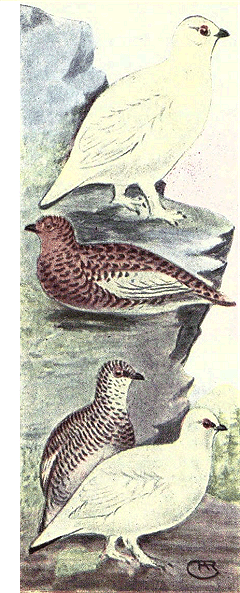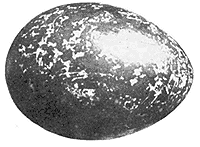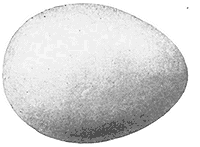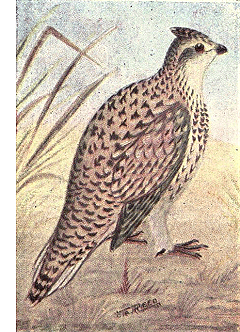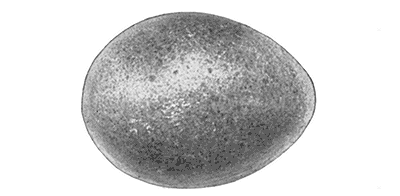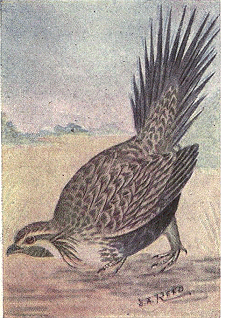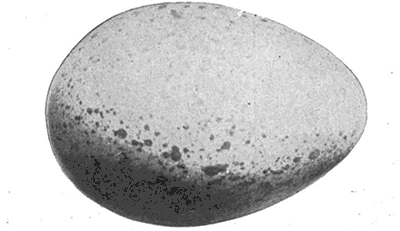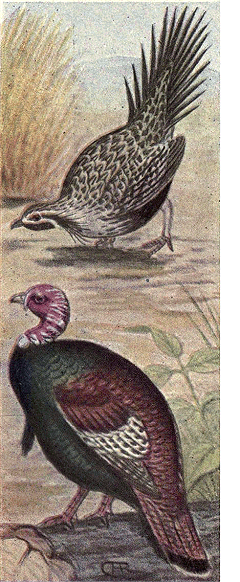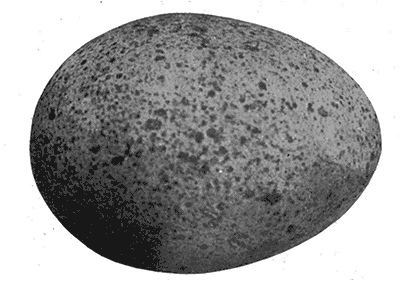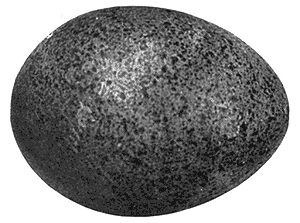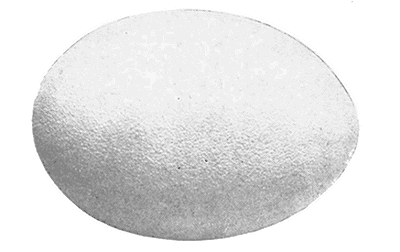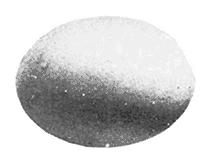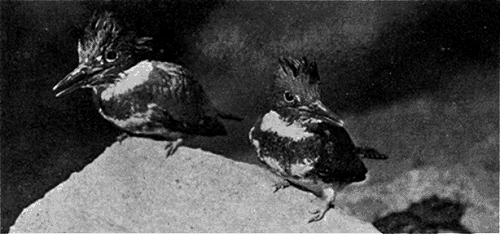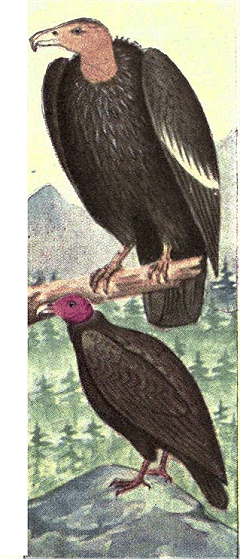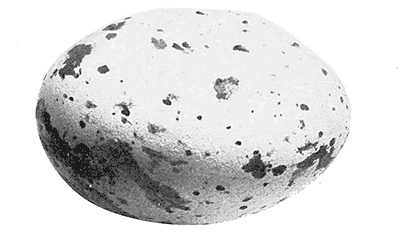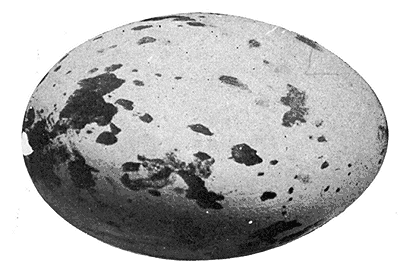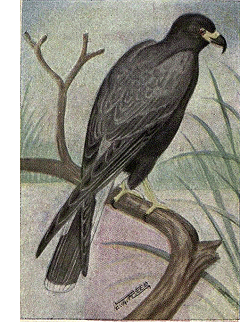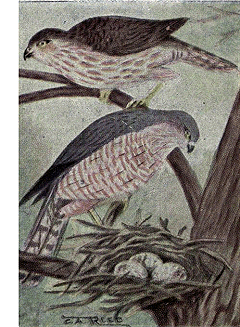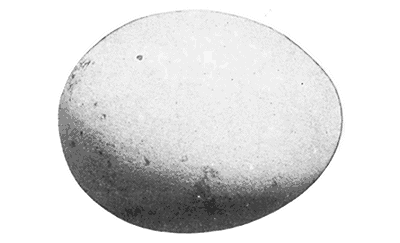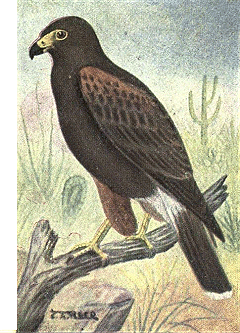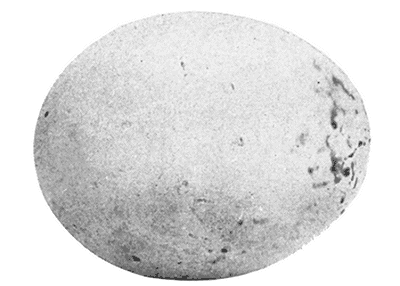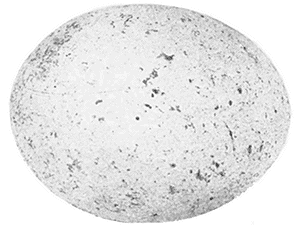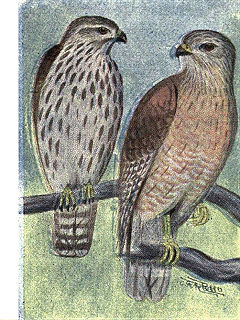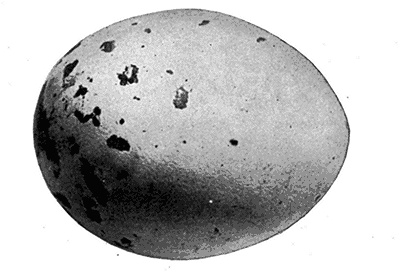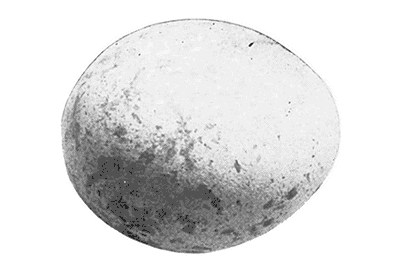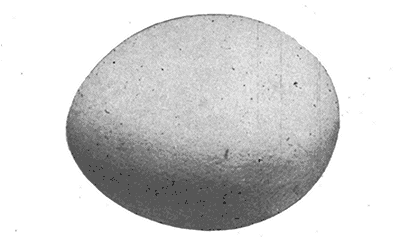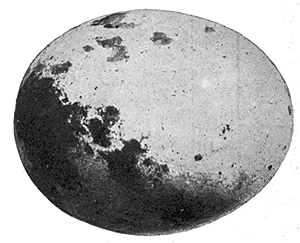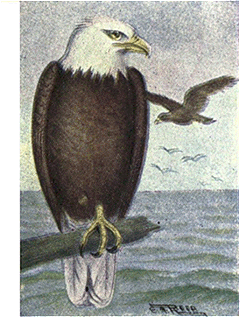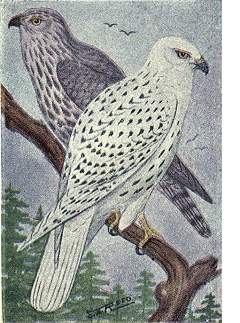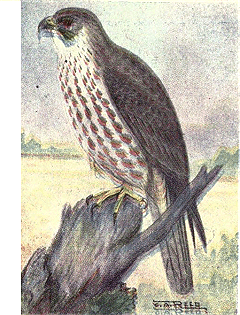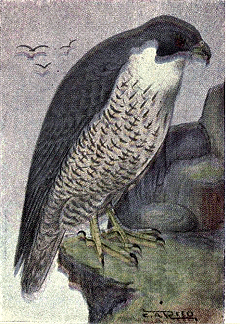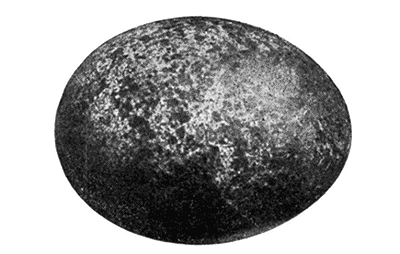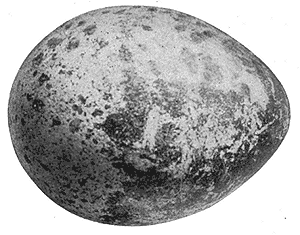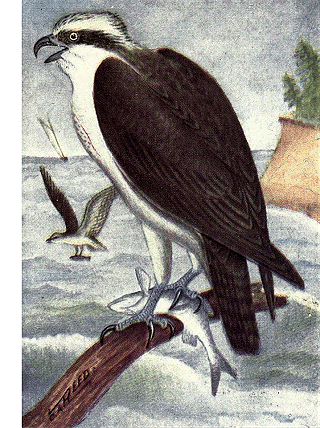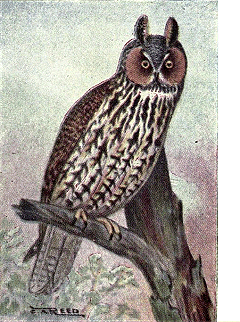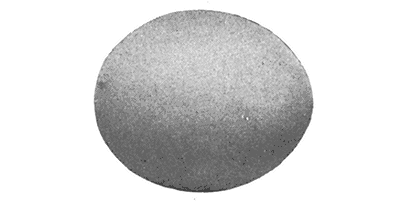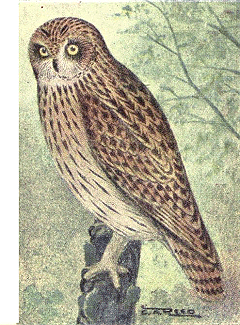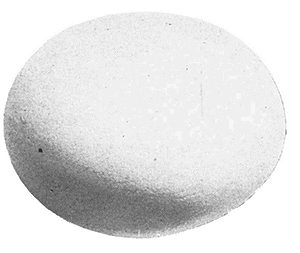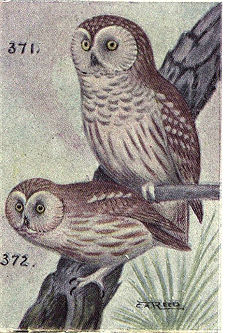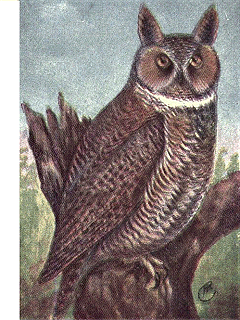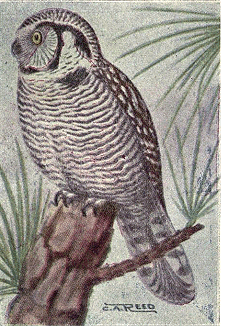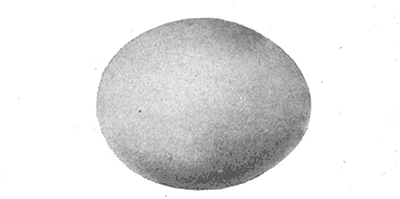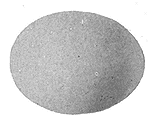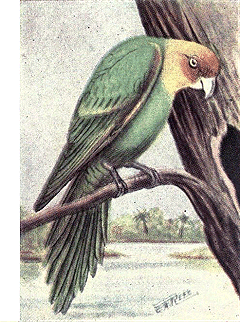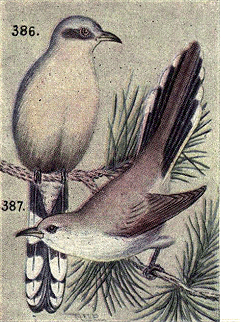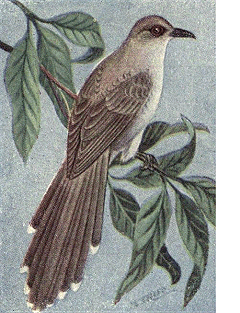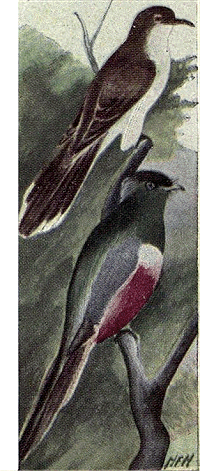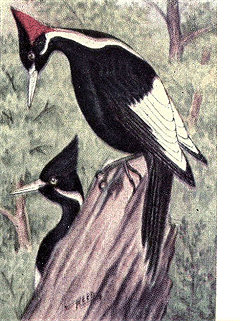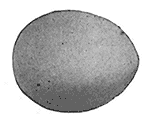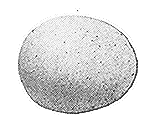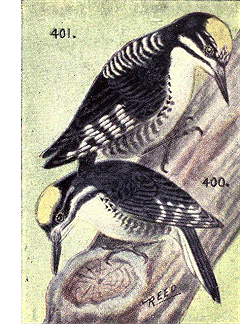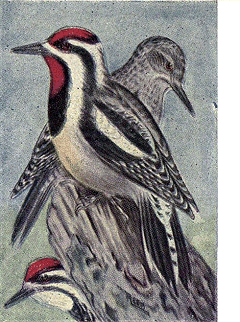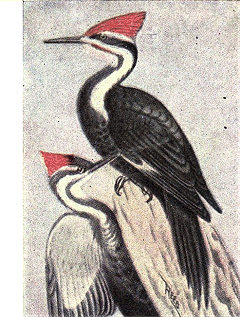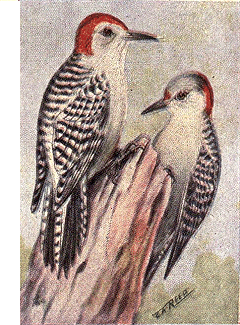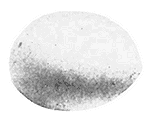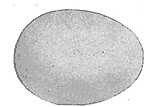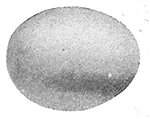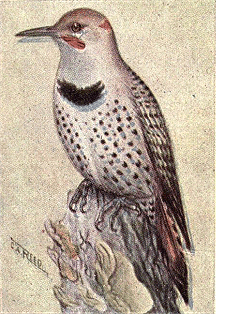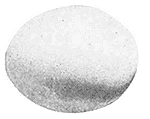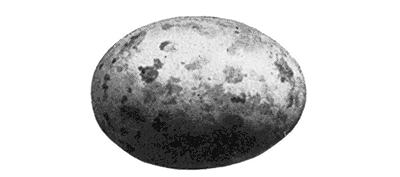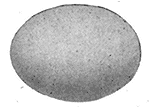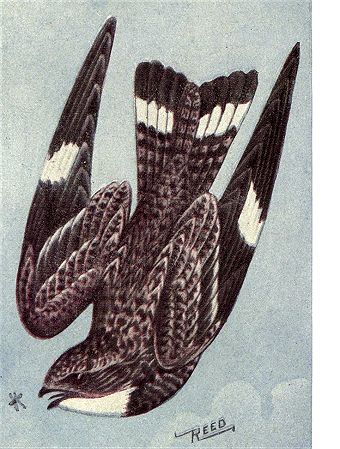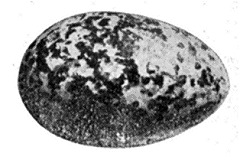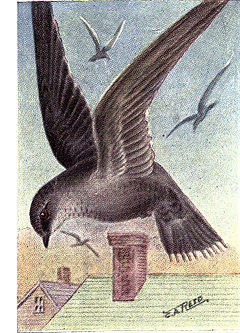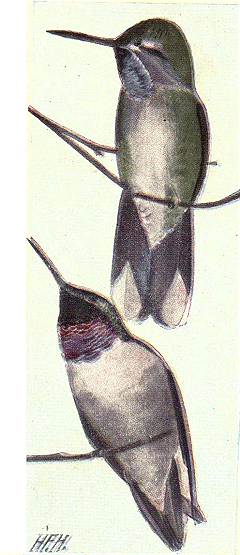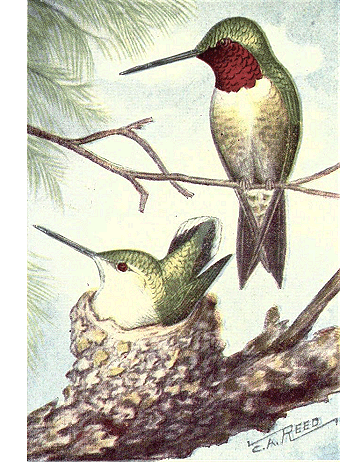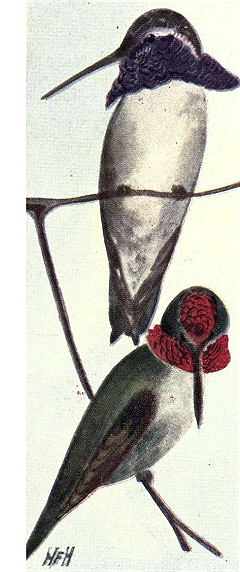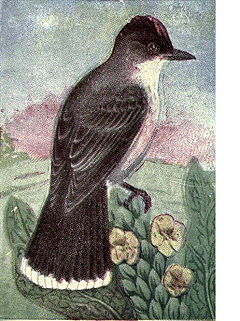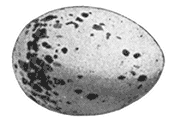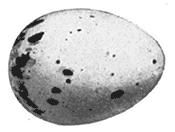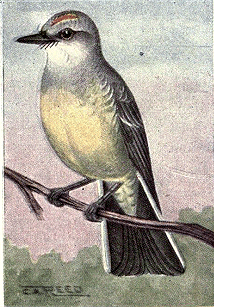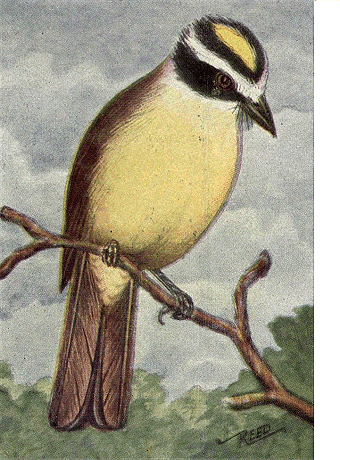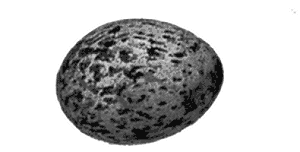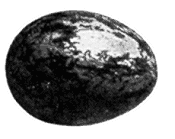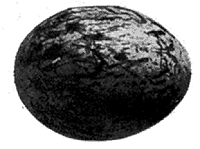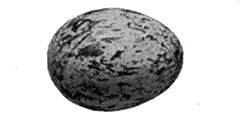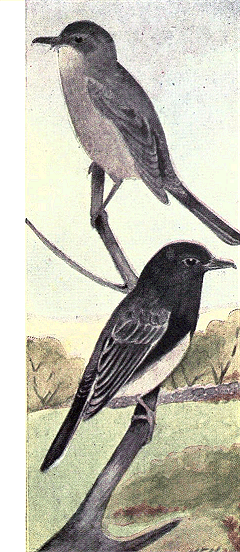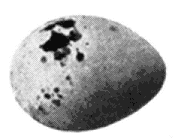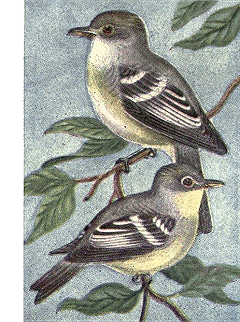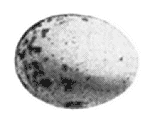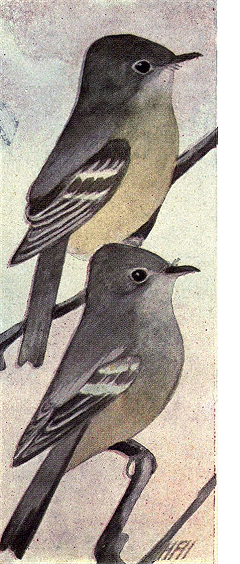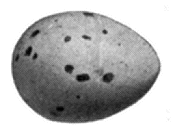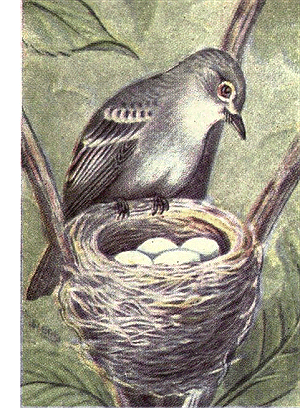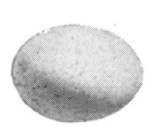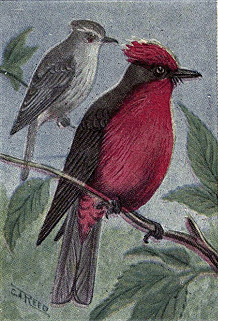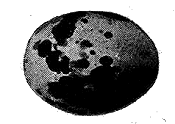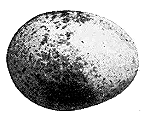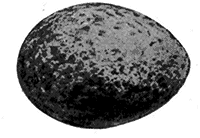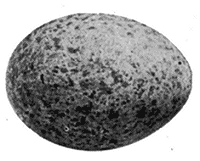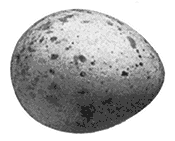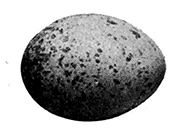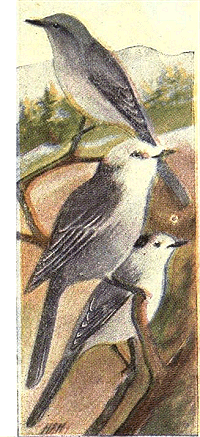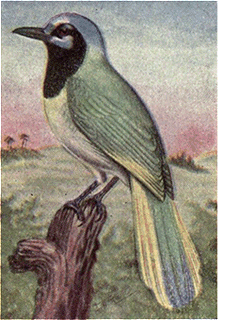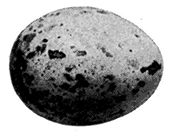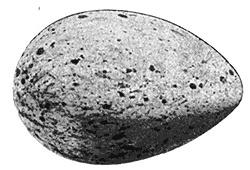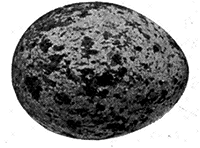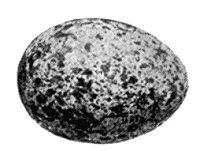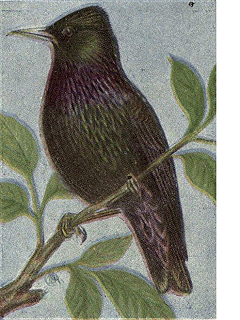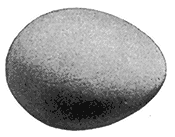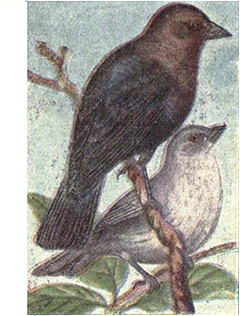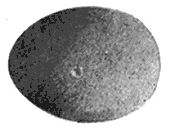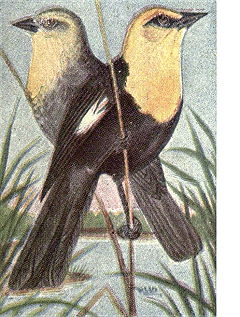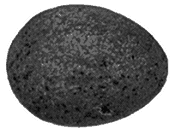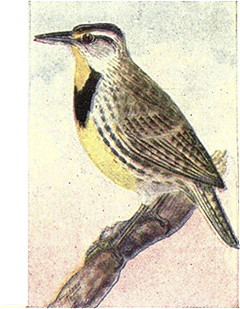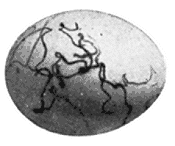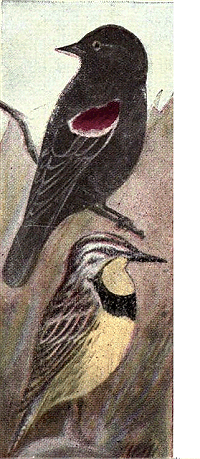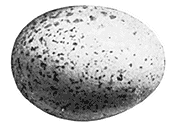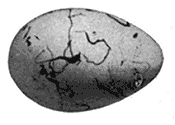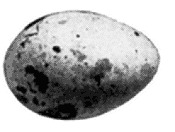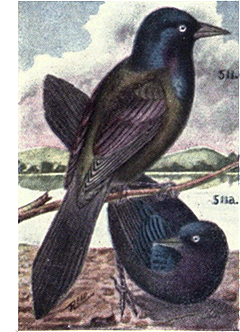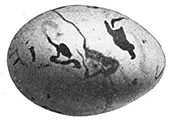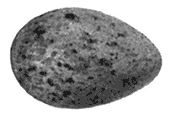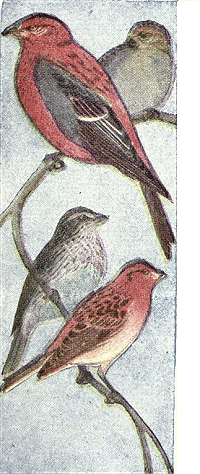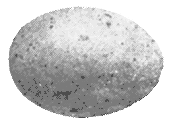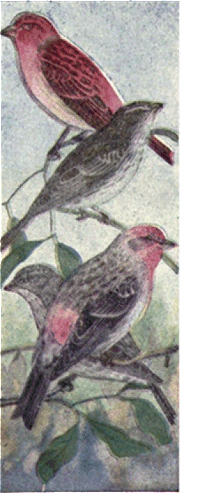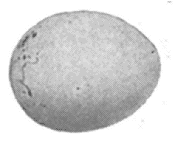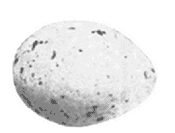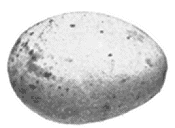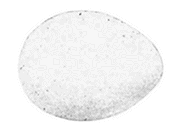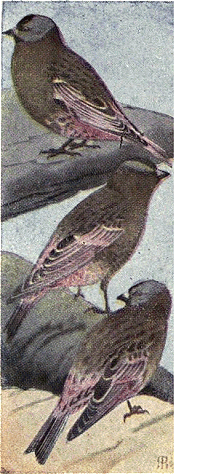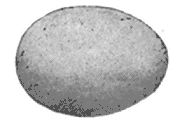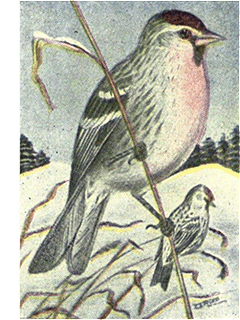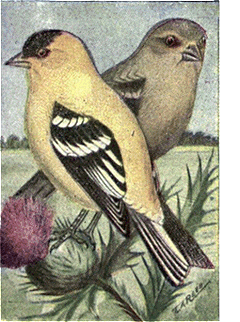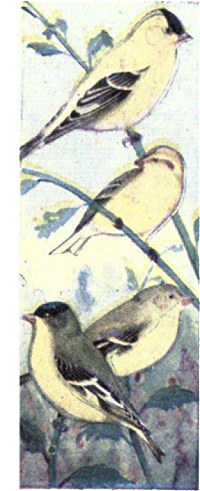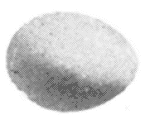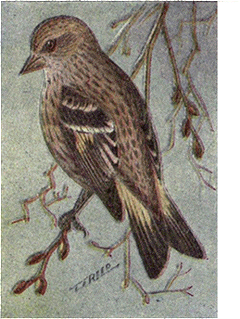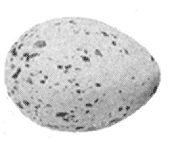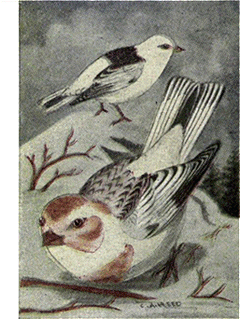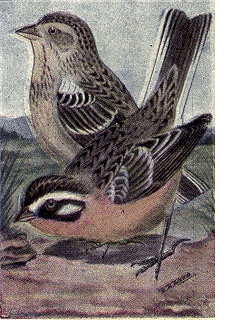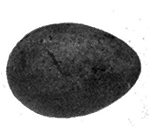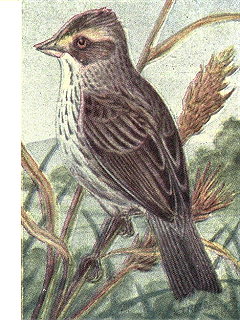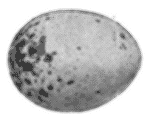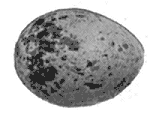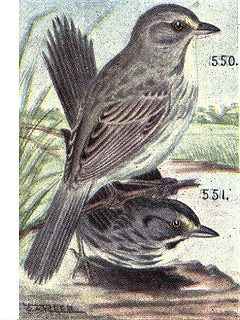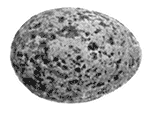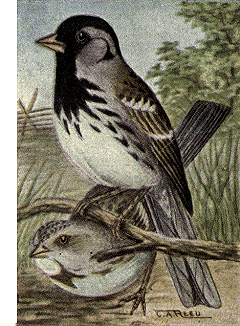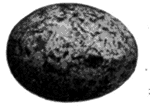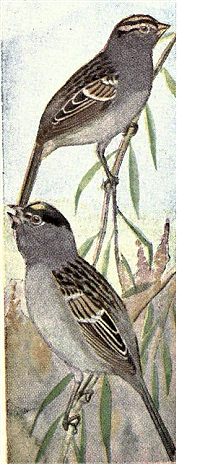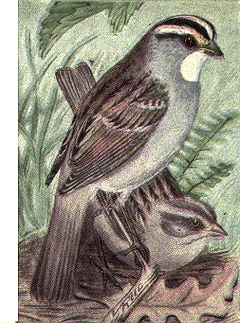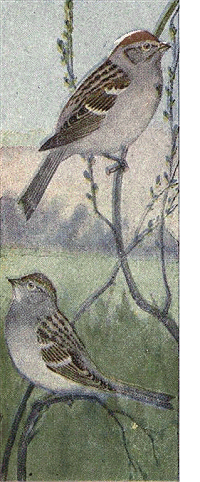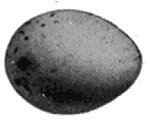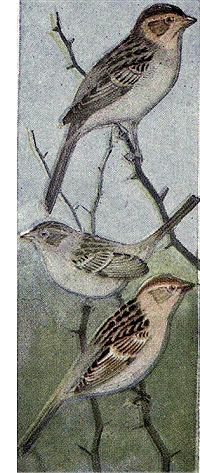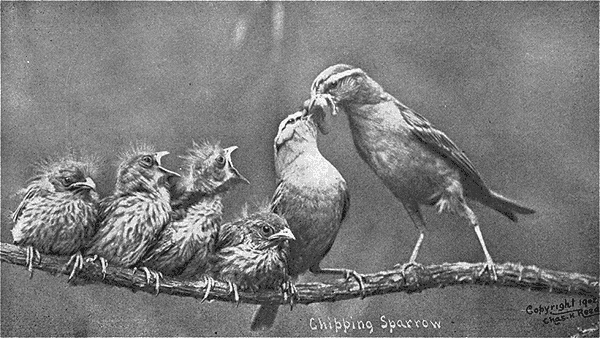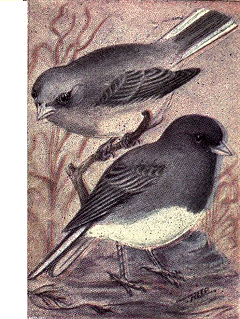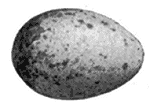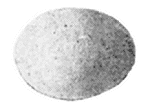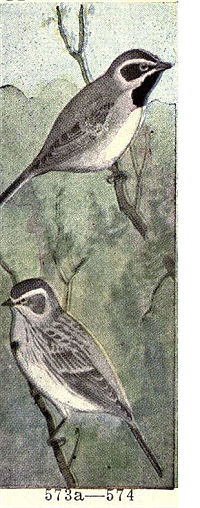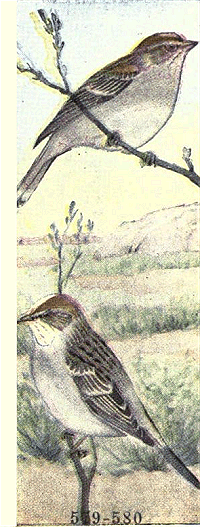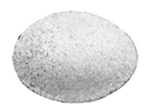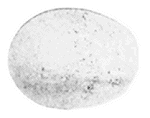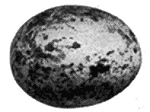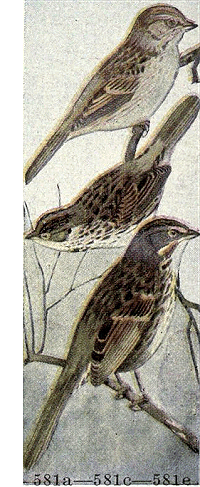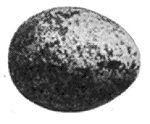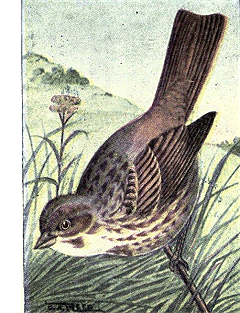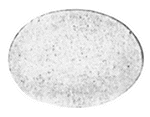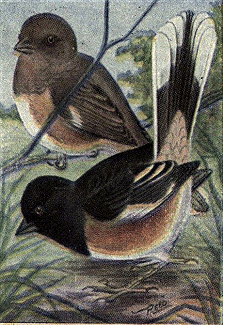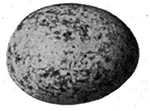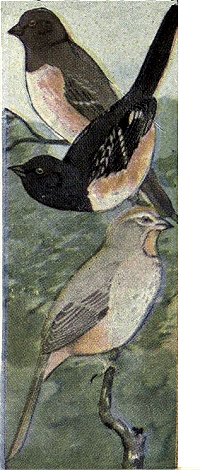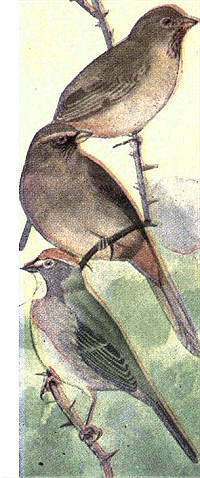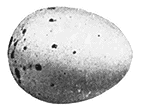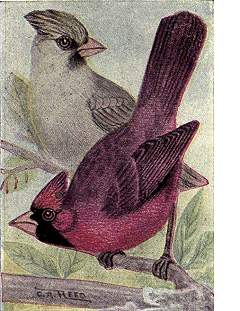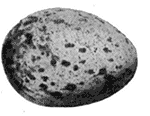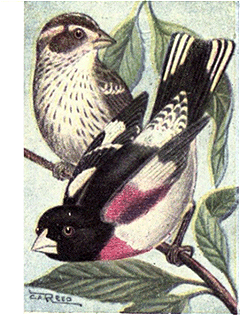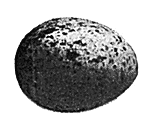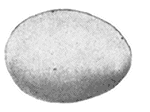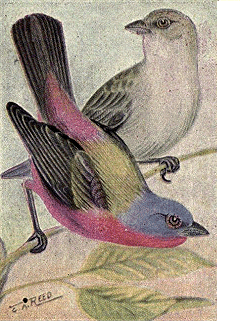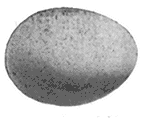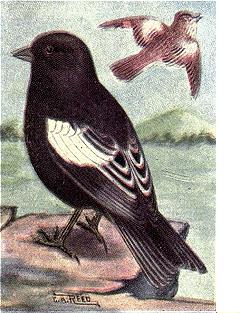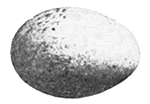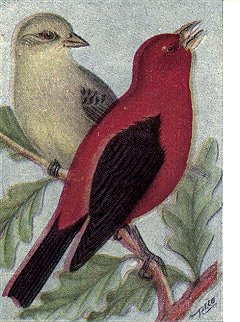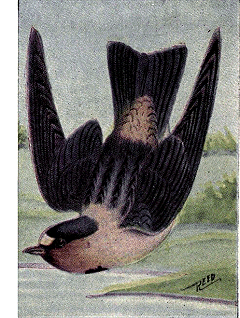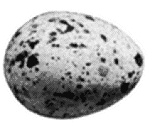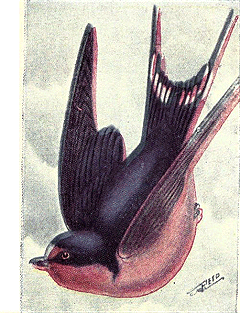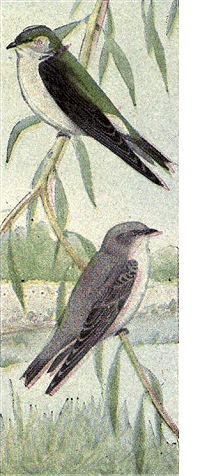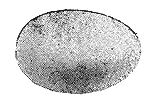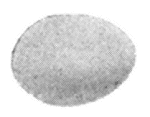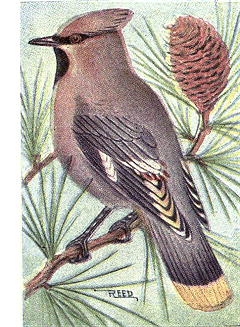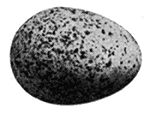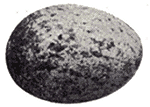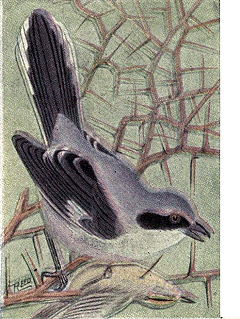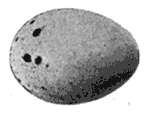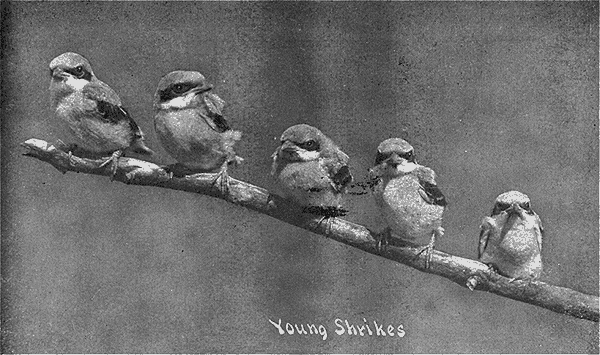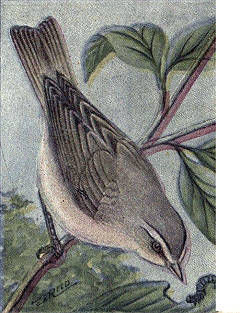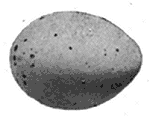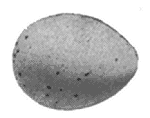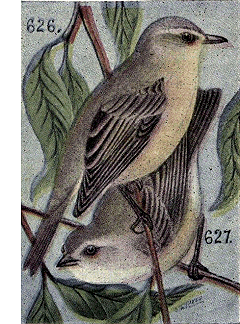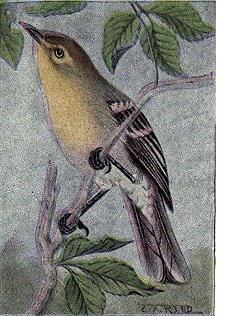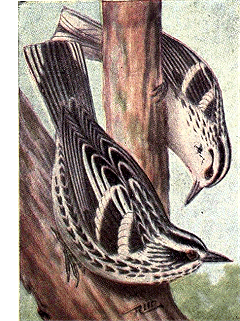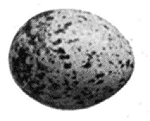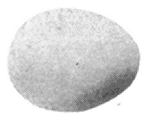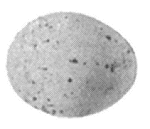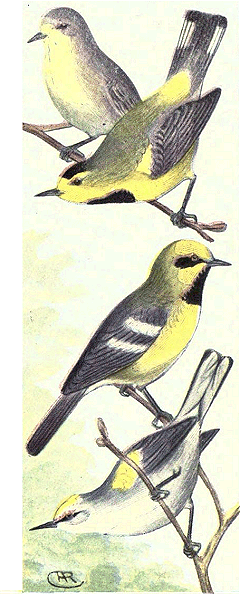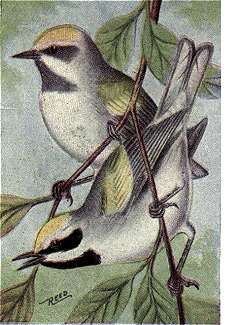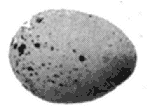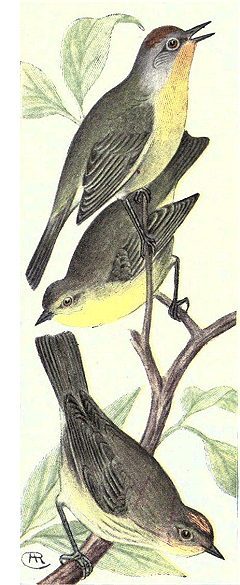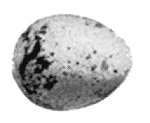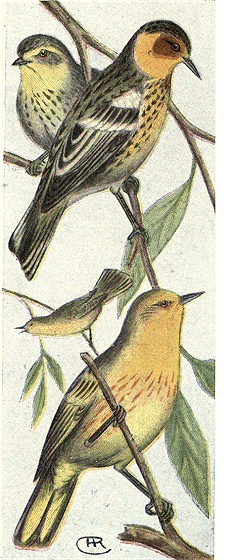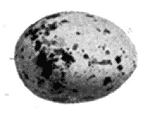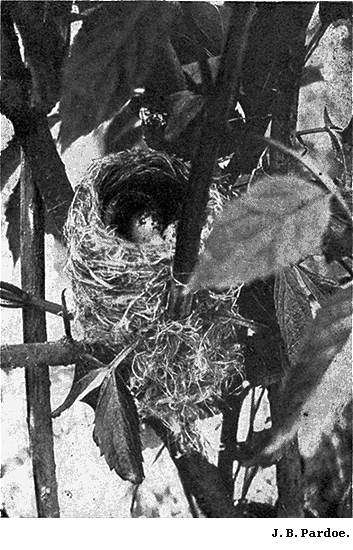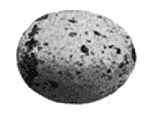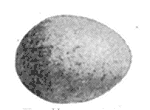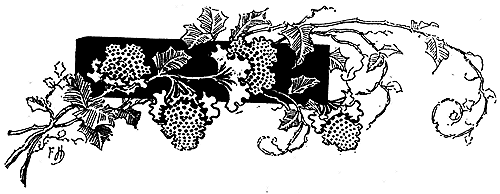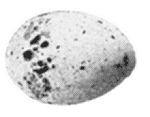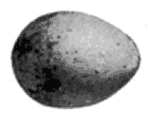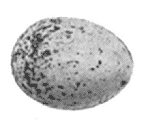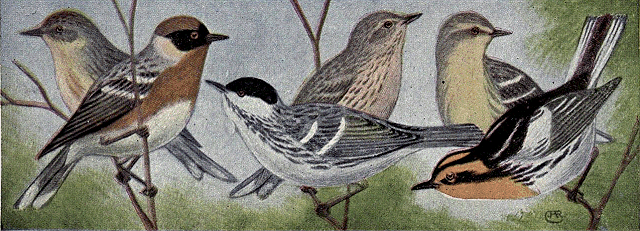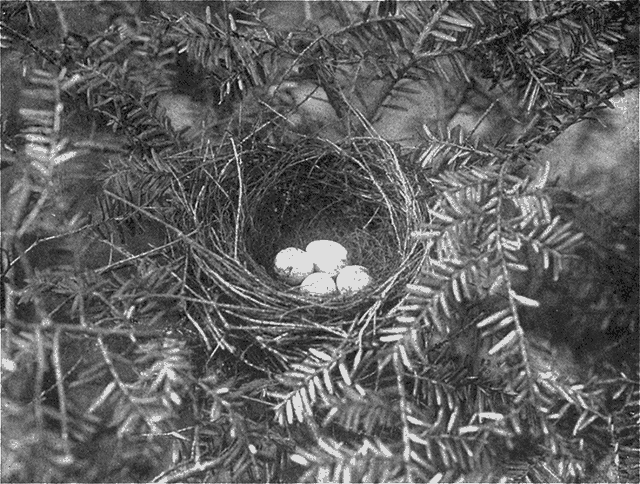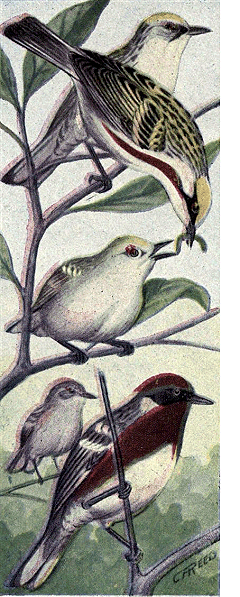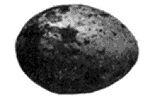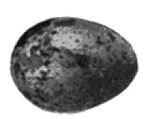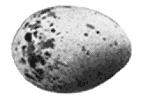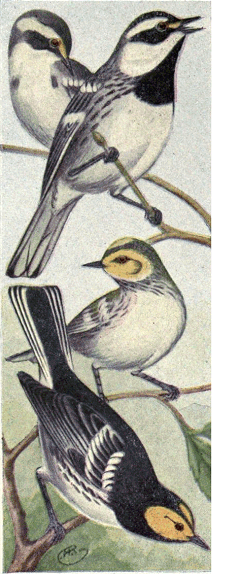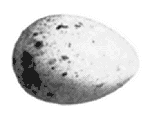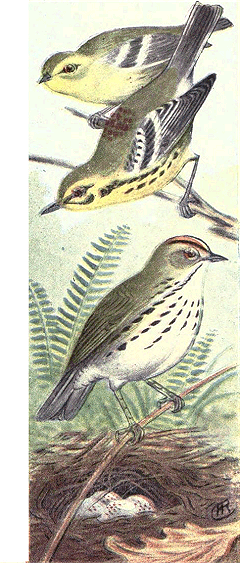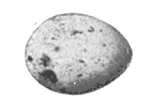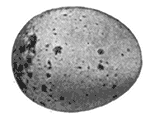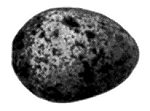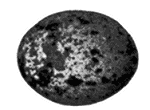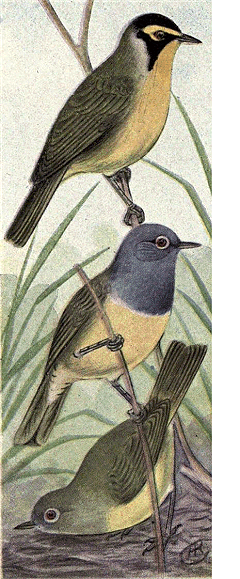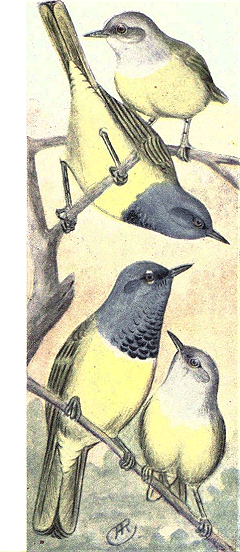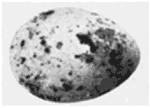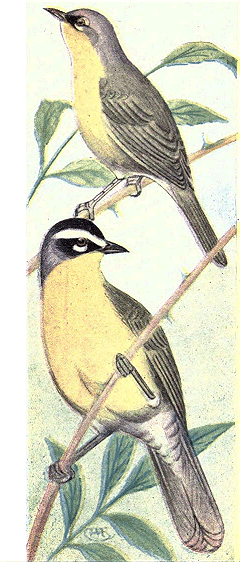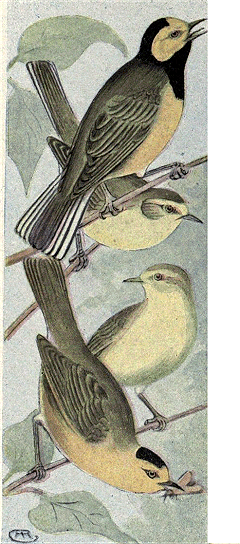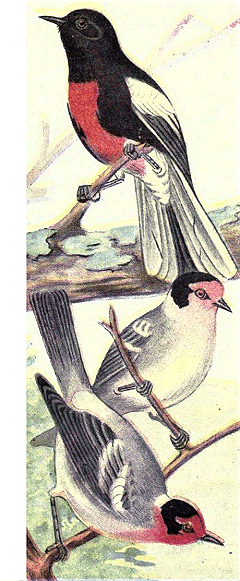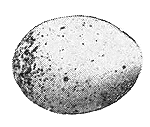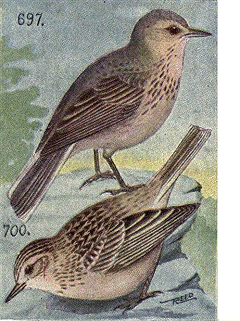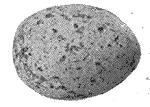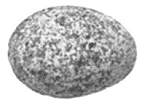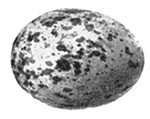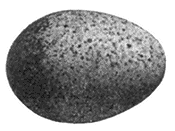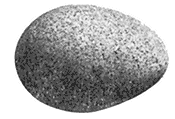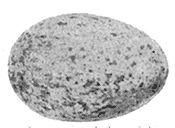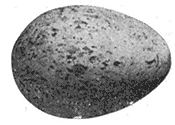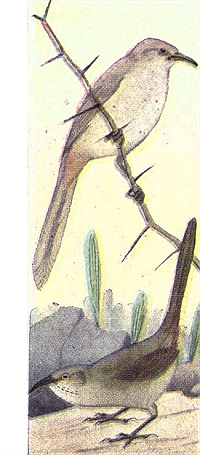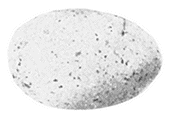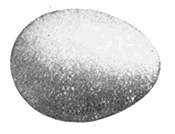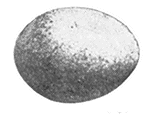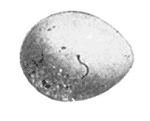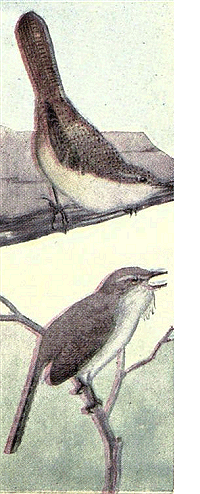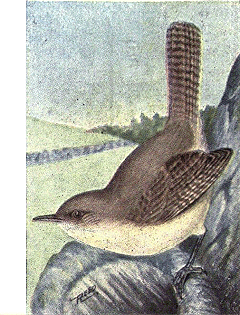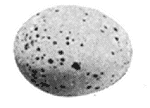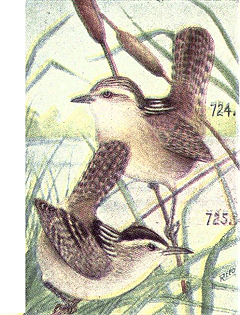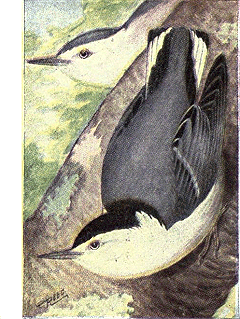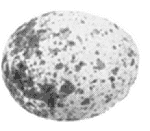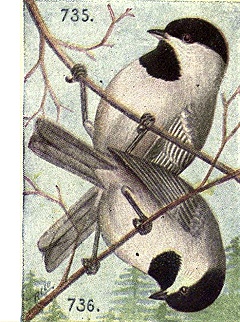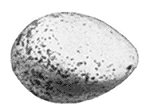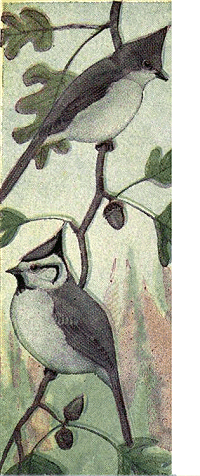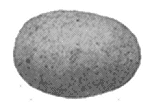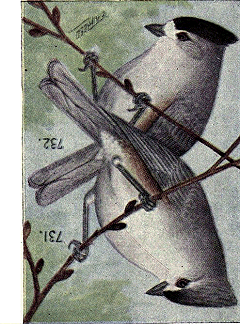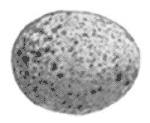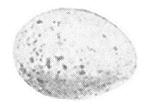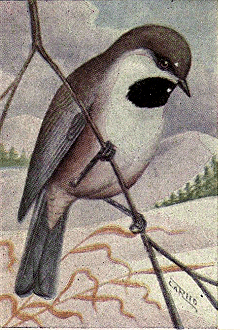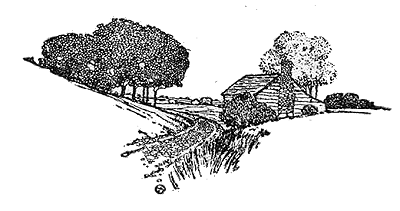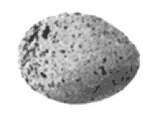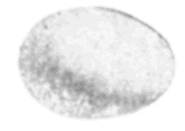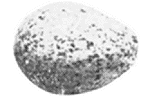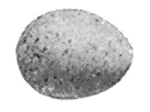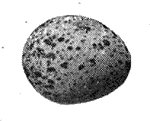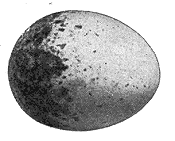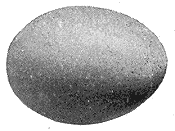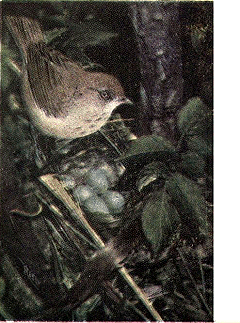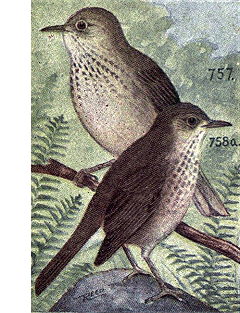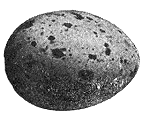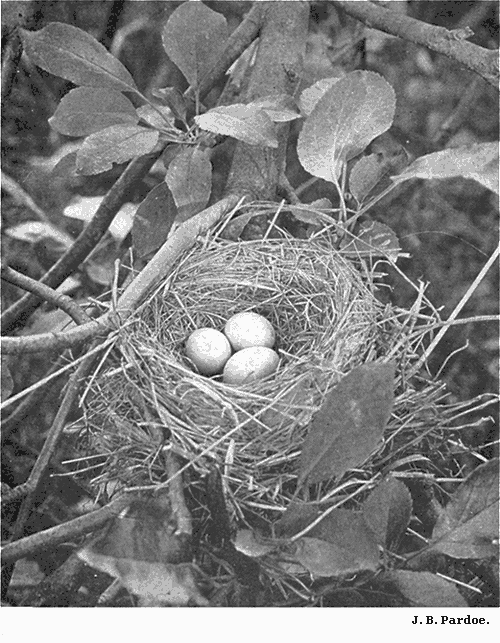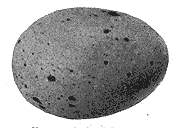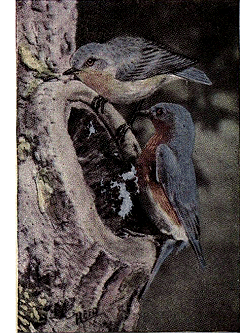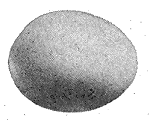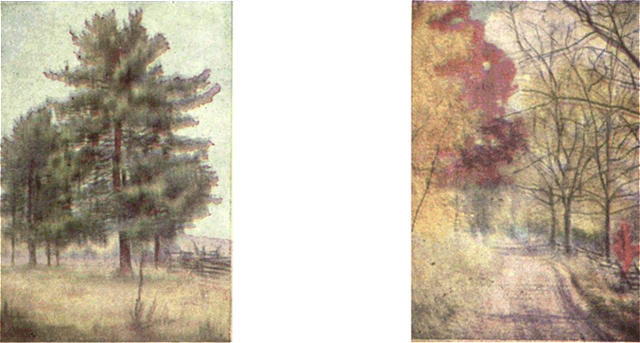|
|
|
|
THE BIRD BOOK
ILLUSTRATING IN NATURAL COLORS
MORE THAN SEVEN HUNDRED
NORTH AMERICAN BIRDS;
ALSO SEVERAL HUNDRED
PHOTOGRAPHS OF THEIR
NESTS AND EGGS
BY
CHESTER A. REED, B. S.

Garden City New York
DOUBLEDAY, PAGE & COMPANY
1915
Copyright, 1914, by
CHARLES K. REED
All rights reserved, including that of
translation into foreign languages,
including the Scandinavian.

BARN OWL.

TOPOGRAPHY OF A BIRD.
TABLE OF CONTENTS
Diving Birds. Order I. Pygopodes 10 Grebes. Family Colymbidæ 11 Loons. Family Gaviidæ 17 Auks, Murres and Puffins. Family Alcidæ 21 Long-winged Swimmers. Order II. Longipennes 35 Skuas and Jægers. Family Stercoraridæ 35 Gulls and Terns. Family Laridæ 38 Skimmers. Family Rynchopidæ 58 Tube-nosed Swimmers. Order III. Tubinares 59 Albatrosses. Family Diomedeidæ 59 Fulmars, Shearwaters and Petrels. Family Procellariidæ 61 Totipalmate Swimmers. Order IV. Steganopodes 72 Tropic Birds. Family Phæthontidæ 72 Gannets. Family Sulidæ 74 Darters. Family Anhingidæ 77 Cormorants. Family Phalacrocoracidæ 78 Pelicans. Family Pelecanidæ 83 Man-o'-War Birds. Family Fregatidæ 86 Lamellirostral Swimmers. Order V. Anseres 87 Lamellirostral Grallatores. Order VI. Odontoglossæ 115 Flamingoes. Family Phœnicopteridæ 115 Herons, Storks, Ibises, etc. Order VII. Herodiones 115 Spoonbills. Family Plataleidæ 115 Ibises. Family Ibididæ 117 Storks and Wood Ibises. Family Ciconiidæ 118 Herons, Bitterns, etc. Family Ardeidæ 119 Cranes, Rails, etc. Order VIII. Paludicolæ 127 Cranes. Family Gruidæ 127 Courlans. Family Aramidæ 129 Rails, Gallinules and Coots. Family Rallidæ 131 Shore Birds. Order IX. Limicolæ 137 Phalaropes. Family Phalaropodidæ 137 Avocets and Stilts. Family Recurvirostridæ 139 Snipes, Sandpipers, etc. Family Scolopacidæ 140 Plovers. Family Charadriidæ 161 Surf Birds and Turnstones. Family Aphrizidæ 169 Oyster-catchers. Family Hæmatopodidæ 170 Jacanas. Family Jacanidæ 172 Gallinaceous Birds. Order X. Gallinæ 175 Grouse, Partridges, etc. Family Odontophoridæ 175 Turkeys. Family Meleagridæ 178 Curassows and Guans. Family Cracidæ 191 |
||
| Page 8 |
Pigeons. Order XI. Columbæ 192 Pigeons. Family Columbidæ 192 Birds of Prey. Order XII. Raptores 198 American Vultures. Family Cathartidæ 198 Hawks, Eagles, etc. Family Buteonidæ 201 Falcons, etc. Family Falconidæ 218 Osprey. Family Pandionidæ 225 Barn Owls. Family Aluconidæ 227 Owls. Family Strigidæ 227 Parrots, Paroquets. Order XIII. Psittaci 241 Parrots and Paroquets. Psittacidæ 241 Cuckoos, etc. Order XIV. Coccyges 241 Cuckoos, Anis, etc. Family Cuculidæ 241 Trogons. Family Trogonidæ 246 Kingfishers. Family Alcedinidæ 247 Woodpeckers, Wrynecks, etc. Order XV. Pici 249 Woodpeckers. Family Picidæ 249 Goatsuckers, Swifts, etc. Order XVI. Macrochires 262 Goatsuckers, etc. Family Caprimulgidæ 263 Swifts. Family Micropodidæ 268 Hummingbirds. Family Trochilidæ 271 Perching Birds. Order XVII. Passeres 280 Cotingas. Family Cotingidæ 280 Tyrant Flycatchers. Family Tyrannidæ 280 Larks. Family Alaudidæ 297 Crows, Jays, Magpies, etc. Family Corvidæ 300 Starlings. Family Sturnidæ 314 Blackbirds, Orioles, etc. Family Icteridæ 314 Finches, Sparrows, etc. Family Fringillidæ 324 Tanagers. Family Tangaridæ 369 Swallows. Family Hirundinidæ 372 Waxwings. Family Bombycillidæ 375 Shrikes. Family Laniidæ 376 Vireos. Family Vireonidæ 378 Honey Creepers. Family Cœrebidæ 385 Warblers. Family Mniotiltidæ 385 Wagtails. Family Motacillidæ 418 Dippers. Family Cinclidæ 419 Wrens. Family Troglodytidæ 423 Thrashers, etc. Family Mimidæ 429 Creepers. Family Certhiidæ 430 Nuthatches. Family Sittidæ 431 Titmice. Family Paridæ 431 Warblers, Kinglets, Gnatcatchers. Family Sylviidæ 433 Thrushes, Solitaires, Bluebirds, etc. Family Turdidæ 442 Index 451 |

BALTIMORE ORIOLE.
| Page 12 |
NEST AND EGGS OF HOLBOELL'S GREBE |
|
Page 14
|
NEST AND EGGS OF HORNED GREBE |

PIED-BILLED GREBE.

NEST AND EGGS OF LOON.
This nest is built on top of a Muskrat house.
PUFFINS, AUKS and MURRES.
Family ALCIDÆ
|
Puffins, Auks and Murres are all sea birds and are only found inland when blown there by some severe storm of winter. At this season numbers of them are apt to lose their bearings and may sometimes be found with their feet frozen in some of our inland ponds. Puffins are heavily built birds in appearance, but are very active both on the wing and in the water. Their wings are much larger comparatively than those of the other members of this family, so they are enabled to perform evolutions in the air, which are withheld from the others. They stand upright on the sole of the foot and are able to walk quite easily on land. Puffins have very heavy and deep but thin bills, which are entirely unlike those of any other bird and often give then the name of Parrot Auks. Puffins, Auks and Murres are otherwise recognized by the presence of but three toes which are webbed. |
|
LONG-WINGED SWIMMERS. Order II. LONGIPENNES
SKUA AND JAEGERS. Family STERCORARIIDAE
|
Skuas and Jægers are birds having a Gull or Tern-like form and with a hooked bill, the base of which is covered with a scaly shield. They have webbed feet and are able to swim and dive, but they commonly get their living by preying upon the Gulls and Terns, overtaking them by their superior speed and by their strength and ferocity forcing them to relinquish their food. The Jægers especially are one of the swiftest and most graceful birds that fly. |
|
|

Western Gull. 49. Western Gull. Larus occidentalis. Range.--Pacific Coast, breeding from southern California to British Columbia. This bird, which is the most southerly distributed of the larger Gulls is twenty-four inches in length. Mantle slate colored; primaries black, both these and the secondaries being broadly tipped with white. These Gulls nest abundantly on the Farallones, the majority of them showing a preference for the lower portions of the island, although they nest on the ledges also. Besides man, these Gulls are the greatest enemies that the Murres have to content against. They are always on the watch and if a Murre leaves its nest, one of the Gulls is nearly always ready to pounce upon the egg and carry it away bodily in his bill. The Gulls too suffer when the eggers come, for their eggs are gathered up with the Murres for the markets. They make their nests of weeds and grass, and during May and June lay three eggs showing the usual variations of color common to the Gulls eggs. Size 2.75 × 1.90. 50. Siberian Gull. Larus affinis. This bird does not nest in North America, and has a place on our list, by its accidental occurrence in Greenland. It is an Old World species and its nesting habits and eggs are like those of the Herring Gull. 51. Herring Gull. Larus argentatus. Range.--Whole of the Northern Hemisphere, breeding from Maine and British Columbia northward and wintering south to the Gulf. 
Buff. This Gull, which formerly was No. 51a, a subspecies of the European variety, is now regarded as identical with it, and is no longer a sub-species. It is twenty-four inches in length, has a light gray mantle and black primaries which are tipped with white. The Herring Gulls nest in colonies in favorable localities throughout their range, chiefly on the coasts and islands. A few pairs also nest on islands in some of the inland bodies of fresh water. Except in places where they are continually molested, when they will build in trees, they place their nests on the ground either making no nest on the bare sand, or building a bulky nest of seaweed in the grass on higher parts of the island. They lay three eggs of a grayish color marked with brown. In rare cases unspotted bluish white eggs are found. Size 2.80 × 1.70. |
| Page 80 |
|
| Page 84 |
|
| Page 89 |
This species usually nest in holes in trees, but on this island |
| Page 96 |
|
| Page 110 |
|
|
Page 128
|
|
| Page 130 |
|
| Page 141 |
|

WOODCOCK.
| Page 157 |
|
| Page 162 |
|
| Page 164 |
|
| Page 173 |
|
| Page 174 |
|
| Page 181 |
|
| Page 189 |
|
| Page 197 |
|
| Page 200 |
|
| Page 203 |
|
| Page 206 |
|
| Page 210 |
|
| Page 216 |
|
| Page 223 |
|
| Page 226 |
|
| Page 228 |
|
| Page 230 |
|
| Page 236 |
|
| Page 242 |
|
| Page 245 |
|
| Page 248 |
|
| Page 260 |
|
| Page 261 |
|
| Page 267 |
|
| Page 272 |
|
| Page 274 |
|
|
454b. Lower California Flycatcher. Myiarchus cinerascens pertinax. 
Phœbe. Range.--Lower California. This sub-species is similar to Nutting Flycatcher but paler below and grayish above. 455a. Olivaceous Flycatcher. Myiarchus lawrencei olivascens. Range.--Western Mexico, north to southern Arizona. 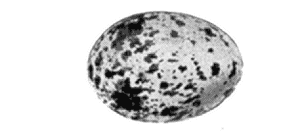
Buffy. This is the smallest of the genus found in the United States, being but 7 inches in length. Except for size it is similar to crinitus but with very little, if any, rusty brown on tail, except for a slight edging on the outer web. Their nesting sites are the same as those chosen by the other Crested Flycatcher, but their eggs appear to have but little of the scratchy appearance of the other members. They are pale buffy, speckled and spotted with brown and lilac; size .80 × .60. Data.--Toluca, Mexico, May 20, 1895. Nest of brown hair and feathers, in hole in tree in woods. Collector, Fred T. Francis. 456. Phœbe.. Sayornis phœbe. Range.--North America, east of the Rockies and north to Nova Scotia. 
White. These very common, grayish colored birds are very often known as "Bridge Birds" because of the frequency with which they construct their nests under bridges and arches; they also build in crevices in ledges or among the hanging roots near the tops of embankments, and on the rafters or beams of old buildings. The nests are made of mud, moss and grass, lined with feathers. The four or five eggs measure .75 × .55. Occasionally, eggs will be found that have a few minute spots of reddish brown. Freak situations in which to locate their nests are often chosen by these birds, such as the brake beam of a freight car, in the crevices of old wells, hen houses, etc. The birds are one of the most useful that we have; being very active and continually on the alert for insects and beetles that constitute their whole bill of fare. |
|
| Page 288 |
|
| Page 292 |
|
| Page 301 |
|
| Page 302 |
|
| Page 304 |
|
| Page 305 |
|
| Page 310 |
|
| Page 318 |
|
| Page 330 |
|
| Page 336 |
|
| Page 339 |
|
| Page 344 |
|
| Page 347 |
|
| Page 359 |
|
| Page 362 |
|
| Page 371 |
|
| Page 377 |
|
| Page 379 |
|
| Page 381 |
|
| Page 393 |
|
| Page 397 |
|
| Page 400 |
|
| Page 406 |
|
| Page 408 |
|
| Page 416 |
|
| Page 444 |
|
| Page 449 |
|
INDEX
| Page 451 |
Acanthis hornemanni............... 328 " exilipes........ 328 linaria......................... 329 " holbœli.................. 329 " rostrata................. 329 Acanthopneuste borealis........... 430 Accipiter cooperi................. 205 velox........................... 204 Actitis macularia................. 158 Æchmophorus occidentalis.......... 11 Æegialitis dubia.................. 166 hiaticula....................... 166 meloda.......................... 166 mongola......................... 167 nivosa.......................... 167 semipalmata..................... 165 Aeronautes melanoleucus........... 270 Æstrelata fisheri................. 67 hasitata........................ 67 scalaris........................ 67 Aethia cristatella................ 25 " pygmaea.................... 25 " pusilla.................... 26 Agelaius gubernator californicus.. 317 phœniceus....................... 316 " bryanti............... 316 " caurinus.............. 316 " floridanus............ 316 " fortis................ 316 " neutralis............. 316 " sonoriensis........... 316 tricolor........................ 317 Aimophila carpalis................ 353 ruficeps........................ 353 " eremœca................ 353 " scotti................. 353 " sororia................ 353 Aix sponsa........................ 95 Ajaja ajaja....................... 115 Alauda arvensis................... 297 Alaudidæ.......................... 297 Albatross, Black-footed........... 59 Laysan.......................... 60 Short-tailed.................... 59 Sooty........................... 60 Yellow-nosed.................... 60 Alca torda........................ 31 Alcedinidæ........................ 247 Alcidæ............................ 21 Alle alle......................... 34 Aluconidæ......................... 227 Alucopratincola................... 227 |
Amzillis cerviniventris chalconota 279 tzacatl......................... 278 Ammodramus bairdi................. 338 savannarum australis............ 338 " bimaculatus.......... 338 " floridanus........... 340 Amphispiza belli.................. 351 nevadensis cinerea.............. 352 " nevadensis........... 352 bilineata bilineata............. 351 " deserticola........... 351 Anas platyrhynchos................ 88 fulvigula fulvigula............. 90 " maculosa.............. 91 rubripes........................ 90 Anatidæ........................... 87 Anhinga........................... 77 anhinga......................... 77 Anhingidæ......................... 77 Ani............................... 241 Grove-billed.................... 243 Anous stolidus.................... 57 Anser albifrons albifrons......... 108 " gambeli........... 108 fabalis......................... 108 Anseres........................... 87 Anthus cervinus................... 419 pratensis....................... 418 rubescens....................... 418 spraguei........................ 419 Antrostomus carolinensis.......... 263 vociferus vociferus............. 263 " macromystax........... 264 Aphelocoma californica californica 307 Aphelocoma californica hypoleuca.. 307 " obscura.... 307 cyanea.......................... 306 cyanotis........................ 307 insularis....................... 307 sieberi arizonæ................. 307 " couchi.................. 308 texana.......................... 307 woodhousei...................... 306 Aphriza virgata................... 169 Aphrizidæ......................... 169 Aquila chrysætos.................. 215 Aramidæ........................... 129 Aramus vociferus.................. 129 Archibuteo ferrugineus............ 215 lagopus sancti-johannis......... 214 Archilochus alexandri............. 273 " colubris.............. 273 |
| Page 452 |
Arctonetta fischeri............... 102 Ardea cinerea..................... 122 " herodias.................... 121 " fannini............ 121 " wardi.............. 122 " occidentalis................ 121 Ardeidæ........................... 119 Arenaria interpres interpres...... 169 melanocephala................... 170 morinella....................... 169 Arquatella maritima couesi........ 146 ptilocnemis..................... 147 maritima maritima............... 146 Arremonops rufivirgatus........... 357 Asio accipitrinus................. 229 " flammeus..................... 229 " wilsonianus.................. 227 Astragalinus lawrencei............ 331 psaltria psaltria............... 331 tristis tristis................. 329 " pallidus................ 331 " salicamans.............. 331 Astur atricapillus atricapillus... 205 " striatulus..... 207 Asturina plagiata................. 214 Asyndesmus lewisi................. 257 Atthis morcomi.................... 278 Auk, Great...................... 33-32 Razor-billed.................... 31 Auklet, Cassin's.................. 24 Crested......................... 26 Least........................... 27 Paroquet........................ 26 Rhinoceros...................... 23 Whiskered....................... 26 Auriparus flaviceps flaviceps..... 439 " lamprocephalus.. 439 Avocet............................ 139 Bæolophus atricristatus atricrista- tus.......................... 433 bicolor......................... 433 inornatus inornatus............. 434 " cineraceus............ 434 " griseus............... 434 wollweberi...................... 434 Baldpate.......................... 92 Bartramia longicauda.............. 156 Basilinna leucotis................ 279 xantusi......................... 279 Becard, Xantus's.................. 280 Bittern........................... 119 Cory's Least.................... 120 Least........................... 120 Blackbird, Bicolored.............. 317 Brewer's........................ 322 Red-winged...................... 316 Rusty........................... 322 |
Tricolored...................... 317 Yellow-headed................... 315 Bluebird.......................... 448 Azure........................... 448 Chestnut-backed................. 450 Mountain........................ 450 San Pedro....................... 450 Western......................... 450 Bluethroat Siberian Red-spotted... 448 Bobolink.......................... 314 Bob-white......................... 175 Florida......................... 175 Masked.......................... 175 Texan........................... 175 Bombycilla cedrorum............... 375 garrula......................... 375 Bombycillidæ...................... 375 Bonasa umbellus umbellus.......... 180 " sabini............ 182 " togata............ 182 " umbelloides....... 182 Booby............................. 75 Blue-faced...................... 74 Blue-footed..................... 74 Brewster's...................... 75 Red-footed...................... 75 Botaurus lentiginosus............. 119 Brachyramphus brevirostris........ 27 craveri's....................... 28 hypoleucus...................... 27 marmoratus...................... 27 Brant............................. 111 Black........................... 111 Branta bernicla glaucogastra...... 111 canadensis canadensis........... 109 " hutchinsi............ 109 " minima............... 109 " occidentalis......... 109 leucopsis....................... 112 Branta nigricans.................. 111 Bubo virginianus virginianus...... 235 " elachistus....... 237 " pacificus........ 235 " pallescens....... 235 " saturatus........ 235 " subarticus....... 235 Budytes flavus alascensis......... 418 Buffle-head....................... 100 Bullfinch, Cassin's............... 325 Bulweria bulweri.................. 67 Bunting, Beautiful................ 367 Indigo.......................... 366 Lark............................ 369 Lazuli.......................... 366 McKay's Snow.................... 333 Painted......................... 367 Pribilof Snow................... 332 |
| Page 453 |
Snow............................ 332 Varied.......................... 367 Bush-Tit.......................... 437 California...................... 438 Grinda's........................ 438 Lead-colored.................... 438 Lloyd's......................... 438 Buteo abbreviatus................. 211 albicaudatus sennetti........... 212 borealis borealis............... 208 " calurus..................... 208 " harlani..................... 209 " krideri..................... 208 brachyurus...................... 213 lineatus lineatus............... 209 " alleni...................... 209 " elegans..................... 211 platypterus..................... 213 swainsoni....................... 212 Buteonidæ......................... 201 Butorides virescens virescens..... 124 " anthonyi............ 125 " frazari............. 125 Buzzard, Turkey................... 199 Calamospiza melanocorys........... 369 Calcarius lapponicus lapponicus... 333 " alascensis......... 333 ornatus......................... 334 pictus.......................... 334 Calidris leucophæa................ 151 Callichelidon cyaneoviridis....... 374 Callothrus robustus............... Callipepla squamata squamata...... 176 " castanogastris...... 177 Calothorax lucifer................ 278 Calypte anna...................... 275 costæ........................... 275 Campephilus principalis........... 249 labradorius..................... 101 Camptostoma imberbe............... 296 Canachites canadensis canadensis.. 179 " canace............. 179 " osgoodi............ 179 franklini....................... 180 Canvas-back....................... 97 Caprimulgidæ...................... 263 Caracara, Audubon................. 224 Guadalupe....................... 224 Cardellina rubrifrons............. 417 Cardinal.......................... 363 Arizona......................... 363 Florida......................... 364 Gray-tailed..................... 364 San Lucas....................... 363 Cardinalis cardinalis cardinalis.. 363 " canicaudus......... 364 " floridanus.......... 364 |
Cardinalis igneus................. 363 " superbus........... 363 Carpodacus amplus................. 326 cassini......................... 326 mcgregori....................... 326 mexicanus clementis............. 326 " frontalis.......... 326 " ruberrimus........ 326 purpureus purpureus............... 325 " californicus........ 325 Casarca ferruginea................ 93 Catbird........................... 420 Catharista urubu.................. 199 Cathartes aura septentrionalis.... 199 Cathartidæ........................ 198 Catherpes mexicanus albifrons..... 424 " conspersus.......... 425 " punctulatus......... 425 Catoptrophorus semipalmatus semi- palmatus..................... 155 semipalmatus inornatus.......... 156 Centrocercus urophasianus......... 188 Centurus aurifrons................ 258 carolinus....................... 257 uropygialis..................... 258 Cepphus columba................... 29 grylle.......................... 28 mandti.......................... 29 Cerorhinca monocerata............. 23 Certhia familiaris albescens...... 430 " americana............. 430 " montana............... 430 Certhia familiaris occidentalis... 430 " zelotes................ 430 Certhiidæ......................... 430 Ceryle alcyon..................... 247 americana septentrionalis....... 249 torquata........................ 247 Chachalaca........................ 191 Chæmepelia passerina terrestris... 195 " pallescens......... 195 " bermudiana......... 195 Chætura pelagica.................. 269 vauxi........................... 270 Chamæa fasciata fasciata.......... 437 " henshawi................ 437 Chamæthlypis poliocephala......... 413 Charadriidæ....................... 161 Charadrius apricarius............. 163 dominicus dominicus............. 163 " fulvus...................... 163 Charitonetta albeola.............. 100 Chat, Long-tailed................. 413 Yellow-breasted................. 413 Chaulelasmus streperus............ 91 Chen cærulescens.................. 107 hyperboreus hyperboreus......... 107 |
| Page 454 |
Chen hyperboreus Nivalis.......... 107 rossi........................... 108 Chewink........................... 358 Chickadee......................... 434 Acadian......................... 436 Alaska.......................... 436 Barlow's........................ 437 California...................... 437 Carolina........................ 435 Chestnut-backed................. 437 Hudsonian....................... 436 Long-tailed..................... 435 Mexican......................... 435 Mountain........................ 435 Oregon.......................... 435 Plumbeous....................... 435 Chondestes grammacus grammacus.... 342 strigatus....................... 342 Chordeiles acutipennis texensis... 268 virginianus virginianus......... 266 " chapmani................... 266 " henryi...................... 266 " sennetti.................... 268 Chuck-will's widow................ 263 Ciconiidæ......................... 118 Cinclidæ.......................... 419 Cinclus mexicanus unicolor........ 419 Circus hudsonius.................. 204 Cistothorus stellaris............. 428 Clangula clangula americana....... 99 islandica....................... 99 Coccyges.......................... 241 Coccyzus americanus americanus.... 244 " occidentalis.......... 246 erythrophthalmus................ 246 Cœreba bahamensis................. 385 Cœrebidæ.......................... 385 minor minor..................... 244 " maynardi.................... 244 Colaptes auratus auratus.......... 258 " luteus................ 259 cafer collaris.................. 259 Colaptes cafer saturatior......... 259 chrysoides...................... 262 rufipileus...................... 262 Colinus ridgwayi.................. 175 virginianus..................... 175 " floridanus.................. 175 " texanus.................... 175 Columba fasciata fasciata......... 192 " vioscæ................. 192 flavirostris.................... 192 leucocephala.................... 192 squamosa........................ 192 Columba........................... 192 Columbæ........................... 192 Columbidæ......................... 192 |
Colymbidæ......................... 11 Colymbus auritus.................. 13 dominicus brachypterus.......... 15 holbœlli........................ 11 nigricollis californicus........ 13 Compsothlypis americana ameri cana......................... 390 americana usneæ................. 390 nigrilora....................... 391 Conuropsis carolinensis........... 241 Coot.............................. 136 European........................ 136 Cormorant......................... 79 Baird's......................... 82 Brandt's........................ 82 Double-crested.................. 79 Farallon........................ 81 Florida......................... 81 Mexican......................... 81 Pelagic......................... 82 Red-faced....................... 82 Violet-green.................... 82 White-crested................... 81 Corvidæ........................... 300 Corvus brachyrhynchos brachy- rhynchos.................. 312 brachyrhynchos pascuus.......... 312 corax principalis............... 311 " sinuatus............... 311 cryptoleucus.................... 311 ossifragus...................... 312 Cotingidæ......................... 280 Cowbird........................... 314 Dwarf........................... 315 Red-eyed........................ 315 Cracidæ........................... 191 Crake, Corn....................... 135 Spotted......................... 133 Crane, Little Brown............... 127 Sandhill........................ 129 Whooping........................ 127 Creciscus jamaicensis............. 134 coturniculus.................... 134 Creeper, Brown.................... 430 California...................... 430 Mexican......................... 430 Rocky Mountain.................. 430 Sierra.......................... 430 Crex Crex......................... 135 Crossbill......................... 327 Mexican......................... 327 White-winged.................... 327 Crotophaga ani.................... 241 sulcirostris.................... 243 Crow.............................. 312 Carrion......................... 199 Fish............................ 312 |
| Page 455 |
Florida......................... 312 Cryptoglaux funerea richardsoni... 232 acadica acadica................. 232 " scotæa...................... 232 Cuckoo, Black-billed.............. 246 California...................... 246 Kamchatka........................ 246 Mangrove........................ 244 Maynard's....................... 244 Yellow-billed................... 244 Cuculidæ.......................... 241 Cuculus canorus telephonus........ 246 Curlew, Bristle-thighed........... 160 Eskimo.......................... 160 Hudsonian....................... 159 Long-billed..................... 159 Cyanocephalus cyanocephalus....... 313 Cyanolæmus clemenciæ.............. 271 Cyanocitta cristata cristata...... 303 " florincola.......... 303 stelleri stelleri............... 303 " annectens................... 306 " carlottæ.................... 306 " diademata................... 303 " frontalis................... 303 Cyanosylvia suecica robusta....... 448 Cyanthus latirostris.............. 279 Cypseloides niger borealis........ 268 Cyrtonyx montezumæ mearnsi........ 178 Dafila acuta...................... 94 Daption capense................... 67 Darters........................... 77 Dendragapus obscurus obscurus..... 178 " fuliginosus........ 178 " richardsoni....... 179 Dendrocygna autumnalis............ 113 bicolor......................... 113 Dendroica æstiva æstiva........... 392 " rubiginosa........... 392 " sonorana............ 292 auduboni auduboni............... 395 " nigrifrons.................. 395 bryanti castaneiceps............ 394 castanea........................ 398 cærulea......................... 396 cærulescens cærulescens........, 394 " cairnsi..................... 394 chrysoparia..................... 402 coronata........................ 395 discolor........................ 407 dominica albilora............... 401 dominica dominica............... 401 fusca........................... 399 graciæ.......................... 401 kirtlandi....................... 404 magnolia........................ 396 nigrescens...................... 402 |
occidentalis.................... 404 palmarum palmarum............... 405 " hypochrysea................. 405 pensylvanica.................... 398 striata......................... 399 tigrina......................... 391 townsendi....................... 403 vigorsi......................... 405 virens.......................... 403 Dichromanassa rufescens........... 123 Dickcissel........................ 368 Diomedea albatrus................. 59 immutabilis..................... 60 nigripes........................ 59 Diomedeidæ........................ 59 Dipper............................ 419 Dolichonyx oryzivorus............. 314 Dotterel.......................... 161 Dove, Bermuda Ground.............. 195 Blue-headed Quail............... 196 Ground.......................... 195 Inca............................ 196 Key West Quail.................. 196 Mexican Ground.................. 195 Mourning........................ 193 Ruddy Quail..................... 196 White-fronted................... 195 White-winged.................... 195 Zenaida......................... 194 Dovekie........................... 34 Dowitcher......................... 144 Long-billed..................... 145 Dryobates arizonæ................. 252 borealis........................ 252 nuttalli........................ 252 pubescens pubescens............. 251 " gairdneri.................. 251 " homorus.................... 251 " medianus................... 251 " nelsoni.................... 251 " turati...................... 251 scalaris bairdi................. 252 " lucasanus.................. 252 villosus villosus............... 250 " auduboni.................... 250 " harrisi..................... 250 " hyloscopus................. 250 " leucomelas................. 250 " monticola.................. 250 " picoideus.................. 250 Duck, Black....................... 90 Florida......................... 90 Harlequin....................... 101 Labrador........................ 101 Lesser Scaup.................... 98 Masked.......................... 106 Mottled......................... 91 |
| Page 456 |
Ring-necked..................... 98 Ruddy........................... 106 Rufous-crested.................. 95 Scaup........................... 97 Wood............................ 95 Dumetella carolinensis............ 420 Dunlin............................ 149 Eagle, Bald....................... 217 Golden.......................... 215 Gray Sea........................ 217 Northern Bald................... 217 Ectopistes migratorius............ 193 Egret............................. 122 Reddish......................... 123 Snowy........................... 122 Egretta candidissima candidissima. 122 Eider............................. 103 King............................ 104 Northern........................ 102 Pacific......................... 103 Spectacled...................... 102 Steller's....................... 102 Elanoides forficatus.............. 201 Elanus leucurus................... 201 Empidonax difficilis cineritius... 294 difficilis difficilis........... 293 flaviventris.................... 293 fulvifrons pygmæus.............. 296 griseus......................... 296 hammondi........................ 295 minimus......................... 295 trailli trailli................. 294 " alnorum..................... 295 virescens....................... 294 wrighti......................... 295 Ereunetes mauri................... 151 pusillus........................ 150 Erismatura jamaicensis............ 106 Erolia ferruginea................. 149 Eudromias morinellus.............. 161 Eugenes fulgens................... 271 Euphagus carolinus................ 322 cyanocephalus................... 322 Eurynorhynchus pygmeus............ 150 Falco æsalon...................... 221 columbarius columbarius......... 220 " suckleyi.................... 220 fusco-cærulescens............... 221 islandus........................ 218 mexicanus....................... 219 peregrinus anatum............... 220 " pealei...................... 220 " peregrinus................. 219 richardsoni..................... 220 rusticolus rusticolus........... 218 " gyrfalco.................... 218 " obsoletus................... 219 |
sparverius sparverius........... 222 " peninsularis................ 222 " phalœna..................... 221 sparveroides.................... 222 " tinnunculus................. 221 Falcon Aplomado................... 221 Peale's......................... 220 Peregrine....................... 219 Prairie......................... 219 Finch, Aleutian Rosy.............. 327 Black Rosy...................... 328 Brown-capped Rosy............... 328 California Purple............... 325 Cassin's Purple................. 326 Gray-crowned Rosy............... 328 Guadalupe House................. 326 Hepburn's Rosy.................. 328 House........................... 326 McGregor's House................ 326 Purple.......................... 325 San Clemente House.............. 326 San Lucas House................. 326 Flamingo.......................... 115 Flicker........................... 258 Gilded.......................... 262 Guadalupe....................... 262 Northern........................ 259 Northwestern.................... 259 Red-shafted..................... 259 Florida Cœrulea................... 124 Flycatcher, Acadian............... 294 Alder........................... 295 Arizona Crested................. 286 Ash-throated.................... 286 Beardless....................... 296 Buff-breasted................... 296 Coues's......................... 291 Crested......................... 285 Derby........................... 284 Fork-tailed..................... 280 Gray............................ 296 Hammond's....................... 295 Least........................... 295 Lower California................ 287 Flycatcher, Mexican Crested..... 286 Olivaceous...................... 287 Olive-sided..................... 290 San Lucas....................... 294 Scissor-tailed.................. 281 Sulphur-bellied................. 285 Traill's........................ 294 Vermilion....................... 296 Western......................... 293 Wright's........................ 295 Yellow-bellied.................. 293 Fratercula arctica arctica........ 22 " naumanni............ 23 |
| Page 457 |
corniculata..................... 23 Fregata aquila.................... 86 Fregatidæ......................... 86 Fregetta grallaria................ 71 Frigate Bird...................... 86 Fringillidæ....................... 324 Fulica americana.................. 136 atra............................ 136 Fulmar............................ 62 Giant........................... 62 Pacific......................... 63 Rodgers's....................... 63 Slender-billed.................. 63 Fulmarus glacialis glacialis...... 62 " glupischa............. 63 rodgersi........................ 63 Gadwall........................... 91 Gallinæ........................... 175 Gallinago delicata................ 143 gallinago....................... 140 meda............................ 143 Gallinula galeata................. 136 Gallinule, Florida................ 136 Purple.......................... 135 Gannet............................ 76 Gavia adamsi...................... 18 arctica......................... 18 immer........................... 18 stellata........................ 19 pacifica........................ 19 Gaviidæ........................... 17 Gelochelidon nilotica............. 50 Geococcyx californianus........... 243 beldingi........................ 413 trichas arizela................. 412 " trichas..................... 412 " arizela...................... 412 " ignota...................... 412 " occidentalis................ 412 " sinousa..................... 412 Geotrygon chrysia................. 196 montana......................... 196 Glaucidium gnoma californicum..... 239 " gnoma............... 239 hoskinsi........................ 239 phalænoides..................... 240 Glottis nebularia................. 152 Gnatcatcher, Black-tailed......... 442 Blue-gray....................... 441 Plumbeous....................... 441 Western......................... 441 Godwit, Black-tailed.............. 152 Hudsonian....................... 152 Marbled......................... 151 Pacific......................... 152 Golden-eye........................ 99 Barrow's........................ 99 |
Goldfinch......................... 329 Arkansas........................ 331 Black-headed.................... 331 Lawrence's...................... 331 Pale............................ 331 Willow.......................... 331 Goose, American White-fronted..... 108 Barnacle........................ 112 Bean............................ 108 Blue............................ 107 Canada.......................... 109 Cackling........................ 109 Emperor......................... 112 Greater Snow.................... 107 Hutchins's...................... 109 Ross's.......................... 108 Snow............................ 107 White-cheeked................... 109 White-fronted................... 108 Goshawk........................... 205 Mexican......................... 214 Western......................... 207 Grackle, Boat-tailed.............. 323 Bronzed......................... 323 Florida......................... 323 Great-tailed.................... 324 Purple.......................... 323 Grassquit......................... 368 Melodious....................... 368 Grebe, Eared...................... 13 Holbœll's...... .............. 11-12 Horned........................ 12-13 Least........................... 15 Pied-billed................... 15-16 Mexican......................... 15 Western......................... 11 Greenshank........................ 152 Grosbeak, Alaska Pine............. 325 Black-headed.................... 365 Blue............................ 366 California Pine................. 325 Evening......................... 324 Kadiak Pine..................... 325 Pine............................ 324 Rocky Mountain Pine............. 325 Rose-breasted................... 365 Western Blue.................... 366 Western Evening................. 324 Grouse............................ Canada Ruffed................... 182 Columbian Sharp-tailed.......... 187 Dusky........................... 178 Franklin's...................... 180 Gray Ruffed..................... 182 Oregon Ruffed................... 182 Prairie Sharp-tailed............ 187 Richardson's.................... 179 |
| Page 458 |
Ruffed.......................... 180 Sharp-tailed.................... 187 Sooty........................... 178 Gruidæ............................ 127 Grus americana.................... 127 canadensis...................... 127 mexicana........................ 129 Guara alba........................ 117 rubra........................... 117 Guillemot, Black.................. 28 Mandt........................... 29 Pigeon.......................... 29 Guiraca cærulea................... 366 " lazula................. 366 Gull, Bonaparte's................. 48 California...................... 45 Franklin's...................... 48 Glaucous........................ 40 Glaucous-winged................. 42 Great Black-backed.............. 43 Heerman's....................... 46 Herring......................... 44 Iceland......................... 41 Ivory........................... 39 Kittiwake....................... 39 Kumlien......................... 42 Laughing........................ 47 Little.......................... 49 Mew............................. 46 Nelson.......................... 42 Pacific Kittiwake............... 40 Point Barrow.................... 41 Red-legged Kittiwake............ 40 Ring-billed..................... 45 Ross's.......................... 49 Sabine's........................ 49 Short-billed.................... 46 Siberian........................ 44 Slaty-backed.................... 43 Vega............................ 45 Western......................... 44 Gymnogyps californianus........... 198 Gyrfalcon......................... 218 Black........................... 219 Gray............................ 218 White........................... 218 Hæmatopodidæ...................... 170 Hæmatopus bachmani................ 171 frazari......................... 171 ostralegus...................... 170 palliatus....................... 170 Haliæetus albicilla............... 217 leucocephalus leucocephalus..... 217 " alascanus................... 217 Halocyptena microsoma............. 68 Harelda hyemalis.................. 100 |
Hawk, Black Pigeon................ 220 Broad-winged.................... 213 Cooper's........................ 205 Cuban Sparrow................... 222 Desert Sparrow.................. 221 Duck............................ 220 Florida Red-shouldered.......... 209 Harlan's........................ 209 Harris's........................ 207 Krider's........................ 208 Marsh........................... 204 Mexican Black................... 213 Pigeon.......................... 220 Red-bellied..................... 211 Red-shouldered.................. 209 Red-tailed...................... 208 Richardson's Pigeon............. 220 Rough-legged.................... 214 Sennett's White-tailed.......... 212 Sharp-shinned................... 204 Short-tailed.................... 213 Sparrow......................... 222 San Lucas Sparrow............... 222 Swainson's...................... 212 Western Red-tail................ 208 Zone-tailed..................... 211 Heath Hen......................... 186 Heleodytes brunneicapillus affinis 424 " couesi.............. 423 " bryanti............. 424 Helinaia swainsoni................ 386 Helmitheros vermivorus............ 386 Helodromas ochropus............... 155 solitarius solitarius........... 154 " cinnamomeus................ 155 Herodias egretta.................. 122 Herodiones........................ 115 Heron, Anthony's Green............ 125 Black-crowned Night............. 126 European........................ 122 Frazar's Green.................. 125 Great Blue...................... 121 Great White..................... 121 Green........................... 124 Little Blue..................... 124 Louisiana....................... 123 Northwestern Coast.............. 121 Snowy........................... 122 Ward's.......................... 122 Yellow-crowned Night............ 126 Heteractitis incanus.............. 156 Hesperiphona vespertina vespertina 324 vespertina montana.............. 324 Himantopus mexicanus.............. 139 Hirundinidæ....................... 372 Hirundo erythrogastra............. 373 |
| Page 459 |
Histrionicus histrionicus......... 101 Honey Creeper, Bahama............. 385 Hummingbird, Allen's.............. 277 Anna's.......................... 275 Black-chinned................... 273 Blue-throated................... 271 Broad-billed.................... 279 Broad-tailed.................... 276 Buff-bellied.................... 279 Calliope........................ 278 Costa's......................... 275 Lucifer......................... 278 Morcom's........................ 278 Reiffer's....................... 278 Rivoli's........................ 271 Ruby-throated................... 273 Rufous.......................... 276 White-eared..................... 279 Xantus's........................ 279 Hydranassa tricolor ruficollis.... 123 Hydrochelidon leucoptera.......... 57 nigra surinamensis.............. 56 Hylocichla aliciæ aliciæ.......... 443 " bicknelli........... 443 fuscescens fuscescens........... 443 " salicicola................. 443 guttata auduboni................ 445 " guttata..................... 445 " mustelina................... 442 " nanus....................... 446 " pallasi..................... 446 ustulata swainsoni.............. 445 " ustulata.................... 443 Ibididæ........................... 117 Ibis, Glossy...................... 118 Scarlet......................... 117 White........................... 117 White-faced Glossy.............. 118 Wood............................ 118 Icteria virens virens............. 413 " longicauda............. 413 Icteridæ.......................... 314 Icterus melanocephalus auduboni... 319 bullocki........................ 322 cucullatus nelsoni.............. 320 " sennetti.................... 320 galbula......................... 321 parisorum....................... 320 spurius......................... 321 Ictinia mississippiensis.......... 202 Ionornis martinicus............... 135 Iridoprocne bicolor............... 373 Ixobrychus exilis................. 120 neoxenus........................ 120 Ixoreus nævius meruloides......... 448 " nævius................. 448 Jabiru............................ 119 |
Jabiru mycteria................... 119 Jacana, Mexican................... 172 spinosa......................... 172 Jacanidæ.......................... 172 Jæger, Long-tailed................ 37 Parastic........................ 37 Pomarine........................ 36 Jay, Alaska....................... 309 Arizona......................... 307 Belding's....................... 307 Black-headed.................... 306 Blue............................ 303 Blue-eared...................... 307 Blue-fronted.................... 303 California...................... 307 Canada.......................... 308 Couch's......................... 308 Florida......................... 306 Florida Blue.................... 303 Gray............................ 311 Green........................... 308 Labrador........................ 309 Long-crested.................... 303 Oregon.......................... 309 Pinon........................... 313 Queen Charlotte................. 306 Rocky Mountain.................. 309 Santa Cruz...................... 307 Steller's....................... 303 Texas........................... 307 Woodhouse's..................... 306 Xantus's........................ 307 Junco aikeni...................... 348 Arizona......................... 350 Baird's......................... 351 bairdi.......................... 351 Carolina........................ 350 Guadalupe....................... 351 hyemalis hyemalis............... 349 hyemalis carolinensis........... 350 " mearnsi.................... 350 " connectens................. 349 " montanus................... 350 " oreganus................... 349 " pinosus..................... 349 " thurberi.................... 349 insularis......................... 351 mearnsi......................... Montana......................... 350 Oregon.......................... 349 phæonotus dorsalis.............. 350 " palliatus................... 350 Pink-sided...................... 350 Point Pinos..................... 349 Red-backed...................... 350 Shufeldt's...................... 349 Slate-colored................... 349 |
| Page 460 |
Thurber's....................... 349 Townsend's...................... 350 townsendi's..................... 350 White-winged.................... 348 Kestrel........................... 221 Killdeer.......................... 165 Kingbird.......................... 281 Arkansas........................ 283 Cassin's........................ 284 Couch's......................... 283 Gray............................ 283 Kingfisher, Belted................ 247 Ringed.......................... 247 Texas........................... 249 Kinglet, Dusky.................... 441 Golden-crowned.................. 439 Ruby-crowned.................... 440 Sitka........................... 441 Western Golden crowned.......... 440 Kite, Everglade................... 202 Mississippi..................... 202 Swallow-tailed.................. 201 White-tailed.................... 201 Kittiwake......................... 39 Kittiwake, Pacific.............. 40 Red-legged...................... 40 Knot.............................. 146 Lagopus evermanni................. 184 lagopus lagopus................. 183 " alleni...................... 183 leucurus leucurus............... 185 " peninsularis............... 185 rupestris....................... 183 " atkhensis................... 184 " nelsoni..................... 184 " reinhardi................... 184 " townsendi.................. 184 welchi.......................... 184 Laniidæ........................... 376 Lanius borealis................... 376 ludovicianus ludovicianus....... 376 anthonyi........................ 376 " excubitorides............... 378 " gambeli..................... 378 Lanivireo flavifrons.............. 382 solitarius alticola............. 383 cassini......................... 382 lucasanus....................... 383 plumbeus........................ 382 solitarius...................... 382 Lapwing........................... 161 Laridæ............................ 38 Lark, California Horned........... 298 Desert Horned................... 298 Dusky Horned.................... 299 Horned.......................... 297 Hoyt's Horned................... 299 |
Island Horned................... 299 Montezuma Horned................ 299 Pallid Horned................... 297 Prairie Horned.................. 298 Ruddy Horned.................... 298 Scorched Horned................. 298 Sonora Horned................... 299 Streaked Horned................. 299 Texan Horned.................... 298 Larus affinis..................... 44 argentatus...................... 44 atricilla....................... 47 brachyrhynchus.................. 46 californicus.................... 45 canus........................... 46 delawarensis.................... 45 franklini....................... 48 glaucescens..................... 42 hyporboreus..................... 40 heermanni....................... 46 kumlieni........................ 42 leucopterus..................... 41 marinus......................... 43 minutus......................... 49 nelsoni......................... 42 occidentalis.................... 44 philadelphia.................... 48 schistisagus.................... 43 vegæ............................ 45 Leptotila fulviventris brachyptera 195 Leucosticte, atrata............... 328 australis....................... 328 griseonucha..................... 327 tephrocotis tephrocotis......... 328 " littoralis.................. 328 Limicolæ.......................... 137 Limosa fedoa...................... 151 hæmastica....................... 152 lapponica baueri................ 152 limosa.......................... 152 Limpkin........................... 129 Lobipes Lobatus................... 137 Longipennes....................... 35 Longspur, Alaska.................. 333 Chestnut-collared............... 334 Lapland......................... 333 McCown's........................ 334 Smith's......................... 334 Loon...................... 38-17-20-18 Black-throated.................. 18 Pacific......................... 19 Red-throated.................... 19 Yellow-billed................... 18 Lophodytes cucullatus............. 88 Lophortyx californica............. 177 " vallicola............ 177 gambeli......................... 177 |
| Page 461 |
Loxia curvirostra minor........... 327 " stricklandi.............. 327 leucoptera...................... 327 Lunda cirrhata.................... 22 Machetes Pugnax................... 156 Macrochires....................... 262 Macronectes giganteus............. 62 Macrorhamphus griseus griseus..... 144 " scolopaceus...... 145 Magpie, Yellow-billed............. 300 Mallard........................... 88 Man-o'-War Bird................... 86 Mareca americana.................. 92 penelope........................ 91 Marila affinis.................... 98 americana....................... 95 collaris........................ 98 marila.......................... 97 valisineria..................... 97 Martin, Cuban..................... 372 Purple.......................... 372 Western......................... 372 Meadowlark........................ 317 Rio Grande...................... 317 southern........................ 319 Western......................... 319 Megalestris skua.................. 36 Megaquiscalus major major......... 323 " macrourus........ 324 Melanerpes erythrocephalus........ 256 formicivorus formicivorus....... 256 " angustifrons.............. 257 " bairdi.................... 257 Meleagridæ........................ 178 Meleagris gallopavo intermedia.... 191 " merriami............ 190 " osceola............. 191 " silvestris.......... 190 Melopelia asiatica................ 195 Melospiza melodia caurina......... 355 " cooperi.............. 355 " clementæ............. 355 " fallax............... 354 " graminea............. 355 " heermanni............ 354 " insignis............. 355 " juddi................ 355 " kenaiensis........... 355 " melodia.............. 354 " merrilli............. 355 " montana.............. 354 " morphna.............. 354 " pusillula............ 355 " rivularis............ 355 " rufina............... 355 " samuelis............. 354 georgiana....................... 356 |
lincolni lincolni............... 356 " striata............. 356 Merganser......................... 87 Hooded.......................... 88 Red-breasted.................... 88 Mergus americanus................. 87 serrator........................ 88 Merlin............................ 221 Micropalama himantopus............ 145 Micropallas whitneyi.............. 240 Micropodidæ....................... 268 Mimus polyglottos................. 420 " polyglottos.............. 420 " leucopterus.............. 420 Mniotilta varia................... 385 Mniotiltidæ....................... 385 Mockingbird....................... 420 Western......................... 420 Molothrus ater ater............... 314 " obscurus........................ 315 Motacilla alba.................... 418 ocularis........................ 418 Motacillidæ....................... 418 Murre............................. 29 Brunnich's...................... 31 California...................... 30 Pallas's........................ 31 Murrelet, Ancient................. 26 Craveri's....................... 28 Kittlitz........................ 27 Marbled......................... 27 Xantus.......................... 27 Muscivora forficata............... 281 tyrannus........................ 280 Myadestes townsendi............... 442 Mycteria americana................ 118 Myiarchus cinerascens cinerascens. 286 Myiarchus cinerascens pertinax.... 287 crinitus........................ 285 olivascens...................... 287 magister magister............... 286 nelsoni......................... 286 Myiochanes pertinax pallidiven- tris........................ 291 richardsoni richardsoni......... 293 " peninsulæ................... 293 virens.......................... 291 Myiodynastes luteiventris......... 285 Nannus alascensis............... 428 meliger......................... 428 niemalis helleri................ 428 " niemalis.................... 427 " pacificus................... 428 Netta rufina...................... 95 Nettion carolinense............... 92 crecca.......................... 92 Nighthawk......................... 266 |
| Page 462 |
Florida......................... 266 Sennett's....................... 268 Texas........................... 268 Western......................... 266 Noddy............................. 57 Nomonyx dominicus................. 106 Nucifraga columbiana.............. 313 Numenius americanus............... 159 borealis........................ 160 hudsonicus...................... 159 phæopus......................... 160 tahitiensis..................... 160 Nutcracker, Clark's............... 313 Nuthatch, Brown-headed............ 432 Florida White-breasted.......... 431 Pygmy........................... 432 Red-breasted.................... 432 Rocky Mountain.................. 431 Slender-billed.................. 431 San Lucas....................... 431 White-breasted.................. 431 White-naped..................... 433 Nuttallornis borealis............. 290 Nyctanassa violacea............... 126 Nyctea nyctea..................... 237 Nycticorax nycticorax nævius...... 126 Nyctidromus albicollis merrilli... 265 Oceanites oceanicus............... 71 Oceanodroma furcata............... 68 homochroa....................... 70 kædingi......................... 69 leucorhoa....................... 69 macrodactyla.................... 69 melania......................... 70 socorrœnsis..................... 70 Ochthodromus wilsonius............ 168 Odontoglossæ...................... 115 Odontophoridæ..................... 175 Oidemia americana................. 104 deglandi........................ 105 fusca........................... 105 perspicillata................... 105 Old-squaw......................... 100 Olor buccinator................... 114 columbianus..................... 114 cygnus.......................... 114 Oporornis agilis.................. 410 formosus........................ 410 philadelphia.................... 411 tolmei.......................... 411 Oreortyx picta picta.............. 176 " confinis.............. 176 " plumifera............. 176 Oreospiza chlorura................ 361 Oriole, Arizona Hooded............ 320 Audubon's....................... 319 Baltimore....................... 321 |
Bullock's....................... 322 Scott's......................... 320 Sennett's....................... 320 Orchard........................... 321 Oreoscoptes montanus.............. 419 Ortalis vetula mccalli............ 191 Osprey............................ 225 Octocoris alpestris alpestris..... 297 " actia................ 298 " adusta............... 299 " articola............. 297 " giraudi.............. 298 " hoyti................ 299 " insularis............ 299 " leucolæma............ 298 " merrilli............. 299 " occidentalis......... 299 " pallida.............. 299 " praticola............ 298 " rubea................ 298 " strigata............. 299 Otus asio aikeni.................. 234 " asio...................... 233 " bendirei.................. 233 " cineraceus................ 234 " floridanus................ 233 " kennicotti................ 233 " macfarlanei............... 234 " maxwelliæ................. 233 " mccalli................... 233 flammeolus flammeolus........... 234 " idahoensis................ 234 Trichopsis...................... 234 Xantusi......................... 234 Ouzel, Water...................... 419 Oven-bird......................... 407 Owl, Aiken's Screech.............. 234 Arctic Horned................... 235 Barn............................ 227 Barred.......................... 229 Burrowing....................... 238 California Pygmy................ 239 California Screech.............. 233 Dusky Horned.................... 235 Dwarf Horned.................... 237 Dwarf Screech................... 234 Elf............................. 240 European Hawk................... 237 Ferruginous Pygmy............... 240 Flammulated Screech............. 234 Florida Barred.................. 229 Florida Burrowing............... 239 " Screech..................... 233 Great Gray...................... 231 Great Horned.................... 235 Hawk............................ 238 Hoskin's Pygmy.................. 239 |
| Page 463 |
Kennicott's Screech............. 233 Lapp............................ 232 Long-eared...................... 227 MacFarlane's Screech............ 234 Mexican Screech................. 234 Northern Spotted................ 231 Northwestern Saw-whet........... 232 Pacific Horned.................. 235 Pygmy........................... 239 Richardson's.................... 232 Rocky Mountain Screech.......... 233 Saw-whet........................ 232 Screech......................... 233 Short-eared..................... 229 Snowy........................... 237 Spotted......................... 237 " Screech................ 234 Texas Barred.................... 231 Texas Screech................... 233 Western Horned.................. 235 Xantus's Screech................ 234 Oxyechus vociferus................ 165 Oyster-catcher.................... 170 European.......................... 170 Black............................. 171 Frazar's.......................... 171 Pagophila alba.................... 39 Paludicolæ........................ 127 Pandion haliætus carolinensis..... 225 Parabuteo unicinctus harrisi...... 207 Parauque, Merrill's............... 265 Paroquet, Carolina................ 241 Parrot, Thick-billed.............. 141 Partridge, Alaska Spruce.......... 179 Canada Spruce................... 179 Hudsonian Spruce................ 179 Passer domesticus................. 335 Passerculus beldingi.............. 337 princeps........................ 337 rostratus rostratus............. 338 " guttatus................... 337 " santorum................... 338 sandwichensis sandwichensis..... 337 " alaudinus.................. 337 " bryanti.................... 337 " savanna.................... 337 Passerella iliaca fuliginosa...... 357 " iliaca........... 357 " insularis........ 357 " megarhyncha...... 357 " schistacea....... 357 " stephensi........ 357 " townsendi........ 357 " unalaschensis.... 357 Passeres.......................... 280 Passerherbulus henslowi henslowi.. 340 " occidentalis.. 340 |
caudacutus...................... 340 lecontei........................ 340 maritimus fisheri............... 341 " macgillivrai..... 342 " maritimus........ 341 " peninsulæ........ 341 " sennetti......... 341 nelsoni nelsoni................. 341 " subvirgatus................ 341 nigrescens...................... 342 Passerina amœna................... 366 ciris........................... 367 cyanea.......................... 366 versicolor versicolor........... 367 " pulchra..................... 367 Pediœcetes phasianellus phasianel lus....................... 187 phasianellus campestris......... 187 " columbianus................. 187 Pelagodroma marina................ 71 Pelecanidæ........................ 83 Pelecanus californicus............ 85 erythrorhynchos................. 83 occidentalis.................... 85 Pelican, White.................... 83 Brown........................... 85 California Brown................ 85 Pelidna alpina alpina............. 149 " sakhalina............. 149 Penthestes atricapillus atricapillus 434 " occidentalis....... 435 " septentrionalis.... 435 carolinensis agilis............. 435 " carolinensis.......... 435 cinctus alascensis.............. 436 " gambeli.................... 435 hudsonicus hudsonicus........... 436 " littoralis................. 436 rufescens barlowi............... 437 " neglectus.................. 437 " rufescens.................. 437 sclateri........................ 435 Perisoreus canadensis canadensis.. 308 " capitalis......... 309 " fumifrons......... 309 " nigricapillus..... 309 obscurus obscurus............... 309 " griseus.................... 311 Petrel, Ashy...................... 70 Black........................... 70 Black-capped.................... 67 Bulwer's........................ 67 Fisher's........................ 67 Fork-tailed..................... 68 Guadalupe....................... 69 Kæding's........................ 69 Leach's......................... 68 |
| Page 464 |
Least........................... 68 Pintado......................... 67 Scaled.......................... 67 Socorro......................... 70 Storm........................... 68 White-bellied................... 71 White-faced..................... 71 Wilson's........................ 71 Petrochelidon fulva............... 372 lunifrons lunifrons............. 372 melanogastra.................... 373 Peucæa æstivalis æstivalis........ 352 " bachmani................ 352 botterii........................ 352 cassini......................... 353 Peucedramus olivaceus............. 391 Pewee, Western Wood............... 293 Large-billed Wood............... 293 Wood............................ 291 Phæthon americanus................ 72 æthereus........................ 73 rubricaudus..................... 73 Phæthontidæ....................... 72 Phainopepla....................... 376 nitens.......................... 376 Phalacrocoracidæ.................. 78 Phalacrocorax carbo............... 79 auritus auritus................. 79 " albociliatus............... 81 " cincinatus................. 81 " floridanus................. 81 vigua mexicanus................. 81 pelagicus pelagicus............. 82 " resplendens................ 82 " robustus................... 82 penicillatus.................... 82 urile........................... 82 Phalænoptilus nuttalli nuttalli... 264 " californicus..... 264 " nitidus.......... 264 Phalarope, Northern............... 137 Red............................. 137 Wilson's........................ 138 Phalaropodidæ..................... 137 Phalaropus fulicarius............. 137 Phaleris psittacula............... 25 Phasianidæ........................ 188 Phasianus torquatus............... 188 Pheasant, Ring-necked............. 188 Philacte canagica................. 112 Philohela minor................... 140 Phlœotomus pileatus pileatus...... 255 Phœbe............................. 287 Black........................... 289 Say............................. 289 Phœbetria palpebrata.............. 60 Phœnicopteridæ.................... 115 |
Phœnicopterus ruber............... 115 Pica pica hudsonia................ 300 nuttalli........................ 300 Pici.............................. 249 Picidæ............................ 249 Picoides americanus americanus.... 253 " dorsalis.............. 254 " fasciatus............. 254 arcticus........................ 253 Pigeon, Band-tailed............... 192 Passenger....................... 193 Red-billed...................... 192 Scaled.......................... 192 Viosca's........................ 192 White-crowned................... 192 Pinicola enucleator alascensis.... 325 " californica........... 325 " flammula.............. 325 " leucura............... 324 " montana.............. 325 Pintail........................... 94 Pipilo aberti..................... 361 consobrinus..................... 360 erythrophthalmus erythrophthal- mus......................... 358 erythrophthalmus alleni......... 358 fuscus albigula................. 360 crissalis crissalis............. 360 fuscus mesoleucus............... 360 crissalis senicula.............. 361 maculatus arcticus.............. 358 " clementæ................... 360 " magnirostris............... 360 " megalonyx.................. 360 " montanus................... 358 " oregonus................... 360 Pipit............................. 418 Meadow.......................... 418 Red-throated.................... 419 Sprague's....................... 419 Piranga erythromelas.............. 369 hepatica........................ 370 ludoviciana..................... 369 rubra rubra..................... 370 " cooperi..................... 370 Pisobia aurita.................... 147 bairdi.......................... 148 damacensis...................... 149 fuscicollis..................... 148 maculata........................ 147 minutella....................... 148 Pitangus sulphuratus derbianus.... 284 Planesticus confinis.............. 447 migratorius achrusterus......... 447 " migratorius................ 446 " propinquus................. 446 |
| Page 465 |
Plataleidæ........................ 115 Platypsaris aglaiæ albiventris.... 280 Plautus impennis................ 32-33 Plectrophenax hyperboreus......... 333 nivalis nivalis................. 332 " townsendi................... 332 Plegadis autumnalis............... 118 guarauna........................ 118 Plover, Black-bellied............. 161 European Golden................. 163 Golden.......................... 163 Little Ringed................... 166 Mongolian....................... 167 Mountain........................ 168 Pacific Golden.................. 163 Piping.......................... 166 Ringed.......................... 166 Semipalmated.................... 165 Snowy........................... 167 Upland.......................... 156 Wilson's........................ 168 Podasocys montanus................ 168 Podilymbus podiceps............... 15 Polioptila cærulea cærulea........ 441 " obscura............. 441 californica..................... 442 plumbea......................... 441 Polyborus cheriway................ 224 lutosus......................... 224 Polysticta stelleri............... 102 Poœcetes gramineus gramineus...... 335 " affinis............... 335 " confinis............. 335 Poor-will......................... 264 Dusky........................... 264 Frosted......................... 264 Porzana carolina.................. 133 porzana......................... 133 Prairie Chicken................... 185 Attwater's...................... 186 Lesser.......................... 187 Priocella glacialoides............ 63 Priofinus cinereus................ 66 Procellariidæ..................... 61 Progne cryptoleuca................ 372 subis subis..................... 372 " hesperia.................... 372 Protonotaria citrea............... 386 Psaltriparus melanotis lloydi..... 438 minimus minimus................. 437 " californicus................ 438 " grindæ...................... 438 plumbeus........................ 438 Psittaci.......................... 241 Psittacidæ........................ 241 Ptarmigan, Allen's................ 183 Evermann's...................... 184 |
Kenai White-tailed.............. 185 Nelson's........................ 184 Reinhardt's..................... 184 Rock............................ 183 Townsend's...................... 184 Turner's........................ 184 Welch's......................... 184 White-tailed.................... 185 Willow.......................... 183 Ptychoramphus aleuticus........... 24 Puffin.......................... 22 Horned.......................... 23 Large-billed.................... 23 Tufted.......................... 22 Puffinus assimilis................ 65 auricularis..................... 65 borealis........................ 64 creatopus....................... 65 cuneatus........................ 66 gravis.......................... 64 griseus......................... 66 lherminieri..................... 65 opisthomelas.................... 65 puffinus........................ 64 tenuirostris.................... 66 Pygopodes......................... 10 Pyrocephalus rubineus mexicanus... 296 Pyrrhula cassini.................. 325 Pyrrhuloxia, Arizona.............. 364 sinuata sinuata................. 364 " peninsulæ................... 364 " texana...................... 364 San Lucas....................... 364 Texas........................... 364 California...................... 177 Chestnut Bellied Scaled......... 177 Gambel's........................ 177 Mearn's......................... 178 Quail, Mountain................... 176 Plumed.......................... 176 San Pedro....................... 176 Scaled.......................... 176 Valley.......................... 177 Querquedula cyanoptera............ 93 discors......................... 93 Quiscalus quiscula quiscula....... 323 " aglæus............... 323 " æneus................ 323 Rail, Belding's................... 131 Black........................... 134 California Clapper.............. 131 Carribean Clapper............... 132 Clapper......................... 132 Farallon........................ 134 Florida Clapper................. 132 King............................ 131 Louisiana Clapper............... 132 |
| Page 466 |
Virginia........................ 133 Wayne's Clapper................. 132 Yellow.......................... 131 Rallidæ........................... 131 Rallus beldingi................... 131 crepitans crepitans............. 132 " saturatus................... 132 " scotti...................... 132 " waynei...................... 132 elegans......................... 131 longirostris caribæus........... 132 obsoletus....................... 131 virginianus..................... 132 Raptores.......................... 198 Raven............................. 311 Northern........................ 311 White-necked.................... 311 Recurvirostra americana........... 139 Recurvirostridæ................... 139 Redhead........................... 95 Redpoll........................... 329 Greater......................... 329 Greenland....................... 328 Hoary........................... 328 Holbœll's....................... 329 Redstart.......................... 415 Painted......................... 417 Red-wing, Bahama.................. 316 Bicolored....................... 317 Florida......................... 316 Northwestern.................... 316 San Diego....................... 316 Sonora.......................... 316 Thick-billed.................... 316 Tricolored...................... 317 Regulus calendula calendula....... 440 " grinnelli............. 441 " obscurus.............. 441 satrapa olivaceus............... 440 " satrapa..................... 439 Rhodostethia rosea................ 49 Rhynchophanes mccowni............. 334 Rhynchopsitta pachyrhyncha........ 241 Riparia riparia................... 374 Rissa brevirostris................ 40 tridactyla tridactyla........... 39 " pollicaris................. 40 Road-runner....................... 243 Robin............................. 446 Southern........................ 447 San Lucas....................... 447 Western......................... 446 Rostrhamus sociabilis............. 202 Rough-leg, Ferruginous............ 215 Ruff.............................. 156 Rynchopidæ........................ 58 Rynchops nigra.................... 58 |
Sage Hen.......................... 188 Salpinctes obsoletus obsoletus.... 424 guadeloupensis.................. 424 Sanderling........................ 151 Sandpiper, Aleutian............... 146 Baird........................... 148 Buff-breasted................... 158 Curlew.......................... 149 Green........................... 155 Least........................... 148 Pectoral........................ 147 Pribilof........................ 147 Purple.......................... 146 Red-backed...................... 149 Semipalmated.................... 150 Sharp-tailed.................... 147 Solitary........................ 154 Spoonbill....................... 150 Spotted......................... 158 Stilt........................... 145 Western......................... 151 Western Solitary................ 155 White-rumped.................... 148 Sapsucker, Northern Red-breasted.. 255 Red-breasted.................... 255 Red-naped....................... 254 Williamson's.................... 255 Yellow-bellied.................. 254 Saxicola œnanthe œnanthe.......... 448 " leucorhoa............ 448 Sayornis nigricans................ 289 phœbe........................... 287 sayus........................... 289 Scardafella inca.................. 196 Scolopacidæ....................... 140 Scolopax rusticola................ 140 Scoter............................ 104 Surf............................ 105 Velvet.......................... 105 White-winged.................... 105 Scotiaptex nebulosa lapponica..... 232 " nebulosa............ 231 Seed-eater, Sharpe's.............. 368 Seiurus aurocapillus.............. 407 motacilla....................... 409 noveboracensis noveboracensis... 409 " notabilis................... 409 Selasphorus alleni................ 276 platycercus..................... 276 rufus........................... 277 Steophaga picta................... 417 ruticilla....................... 415 Shearwater, Allied................ 65 Audubon's........................ 65 Black-tailed..................... 66 Black-vented..................... 65 Cory's........................... 64 |
| Page 467 |
Greater......................... 64 Manx............................ 64 Pink-footed..................... 65 Slender-billed.................. 66 Sooty........................... 66 Townsend's...................... 65 Wedge-tailed.................... 66 Sheldrake, Ruddy.................. 93 Shoveller......................... 94 Shrike, California................ 378 Island.......................... 378 Loggerhead...................... 376 Northern........................ 376 White-rumped.................... 378 Sialia currucoides................ 450 mexicana anabelæ................ 450 " bairdi...................... 450 " occidentalis............... 450 sialis sialis................... 448 " fulva....................... 448 Siskin, Pine...................... 332 Sitta canadensis.................. 432 carolinensis carolinensis....... 431 " aculeata.................. 431 " atkinsi..................... 431 " lagunæ...................... 431 " nelsoni..................... 431 pusilla......................... 432 pygmæa pygmæa................... 432 " leuconucha.................. 433 Sittidæ........................... 431 Skimmer, Black.................... 58 Skua.............................. 36 Skylark........................... 297 Snakebird......................... 77 Snipe, European................... 140 Great........................... 143 Wilson's........................ 143 Solitaire, Townsend's............. 442 Somateria dresseri................ 103 mollissima borealis............. 102 spectabilis..................... 104 v-nigra......................... 103 Sora.............................. 133 Sparrow, Acadian Sharp-tailed..... 341 Alameda Song.................... 355 Aleutian Song................... 337 Bachman's....................... 352 Baird's......................... 338 Belding's....................... 337 Bell's.......................... 351 Black-chinned................... 348 Black-throated.................. 351 Botteri's....................... 352 Brewer's........................ 346 Brown's Song.................... 355 Bryant's........................ 337 |
Cassin's........................ 353 Chipping........................ 345 Clay-colored.................... 355 Dakota Song..................... 355 Desert.......................... 351 Desert Song..................... 354 Dusky Seaside................... 342 English......................... 335 Field........................... 348 Florida Grasshopper............. 340 Forbush's....................... 356 Fox............................. 356 Gambel's........................ 343 Golden-crowned.................... 343 Grasshopper..................... 338 Gray Sage....................... 352 Harris's........................ 342 Heermann's Song................. 354 Henslow's....................... 340 Ipswich......................... 337 Kadiak Fox...................... 357 Kenai Song...................... 355 Laguna.......................... 353 Large-billed.................... 338 Lark............................ 342 Leconte's....................... 340 Lincoln's....................... 356 Louisiana Seaside............... 341 Macgillivray's Seaside............ 342 Merrill's Song.................. 355 Mountain Song................... 354 Nelson's........................ 341 Nuttall's....................... 343 Oregon Vesper................... 335 Pine Woods...................... 352 Rock............................ 353 Rufous-crowned.................. 353 Rufous-winged................... 353 Rusty Song...................... 354 Sage............................ 352 Samuel's Song................... 354 San Benito...................... 338 San Clemente Song............... 355 San Diego Song.................. 355 San Lucas....................... 338 Santa Barbara Song.............. 355 Savannah........................ 337 Scott's......................... 353 Scott's Seaside................. 341 Seaside......................... 341 Sharp-tailed.................... 340 Shumagin Fox.................... 357 Slate-colored Fox............... 357 Song............................ 354 Sooty Fox....................... 357 Sooty Song...................... 355 Stephen's Fox................... 357 |
| Page 468 |
Swamp........................... 356 Texas........................... 357 Texas Seaside................... 341 Thick-billed Fox................ 357 Townsend's Fox.................. 357 Tree............................ 345 Vesper.......................... 335 Western Chipping................ 346 Western Field................... 348 Western Grasshopper............. 338 Western Henslow's............... 340 Western Lark.................... 342 Western Savannah................ 337 Western Tree.................... 345 Western Vesper.................. 335 White-crowned................... 343 White-throated.................. 345 Worthen's....................... 348 Yakutat Song.................... 355 Spatula clypeata.................. 94 Speotyto cunicularia floridana.... 239 " hypogæa............... 238 Sphyrapicus ruber ruber........... 255 " notkensis.......... 255 thyroideus...................... 255 varius varius................... 254 " nuchalis.................... 254 Spinus notatus.................... 331 pinus........................... 332 Spiza americana................... 368 Spirella atrogularis.............. 348 breweri......................... 346 monticola monticola............. 345 " ochracea................... 345 passerina arizonæ............... 346 " passerina.................. 345 pallida......................... 346 pusilla pusilla................. 348 " arenacea.................... 348 " arizonæ..................... 346 wortheni........................ 348 Spoonbill, Roseate................ 115 Sporophila morelleti sharpei...... 368 Squatarola squatarola............. 161 Starling.......................... 314 Starnœnas cyanocephala............ 196 Steganopodes...................... 72 Stegonopus tricolor............... 138 Stelgidopteryx serripennis........ 374 Stellula calliope................. 278 Stercorariidæ..................... 35 Stercorarius longicaudus.......... 37 parasiticus..................... 37 pomarinus....................... 36 Sterna aleutica................... 54 anætheta........................ 56 antillarum...................... 55 |
caspia.......................... 50 dougalli........................ 54 elegans......................... 51 forsteri........................ 53 fuscata......................... 55 hirundo......................... 53 maxima.......................... 51 paradisæa....................... 54 sandvicensis acuflavida......... 52 trudeaui........................ 52 Stilt, Black-necked............... 139 Stint, Long-toed.................. 149 Strigidæ.......................... 227 Strix occidentalis caurina........ 231 " occidentalis............ 231 varia allogilva................. 231 " alleni...................... 229 " varia....................... 229 Sturnella magna magna............. 317 " argutula............. 319 " hoopesi.............. 317 " neglecta............. 319 Sturnidæ.......................... 314 Sturnus vulgaris.................. 314 Sula bassana...................... 76 brewsteri....................... 75 cyanops......................... 74 leucogactra..................... 75 nebouxi......................... 74 piscator........................ 75 Sulidæ............................ 74 Surf Bird......................... 169 Sunia ulula ulula................. 237 " caparoch................. 238 Swallow, Bahama................... 374 Bank............................ 374 Barn............................ 373 Cliff........................... 372 Cuban Cliff..................... 373 Mexican Cliff................... 373 Northern Violet-green........... 374 Rough-winged.................... 374 San Lucas....................... 374 Tree............................ 373 Swallow-tailed Kite............... 201 Swan, Trumpeter................... 114 Whistling....................... 114 Whooping........................ 114 Swift, Black...................... 268 Chimney......................... 269 Vaux's.......................... 270 White-throated.................. 270 Slyviidæ.......................... 433 Sylthliboramphus antiquus......... 26 Tachycineta thalassina lepida... 374 " brachyptera..... 374 |
| Page 469 |
Tanager, Cooper's................. 370 Hepatic......................... 370 Western......................... 369 Scarlet......................... 369 Summer.......................... 370 Tangaridæ......................... 369 Tangavius æneus involucratus...... 315 Tattler, Wandering................ 156 Teal, Blue-winged................. 93 Cinnamon........................ 93 European........................ 82 Green-winged.................... 92 Telmatodytes palustris............ 429 " griseus........... 429 " marianæ........... 429 " paludicola........ 429 " plesius........... 429 " palustris......... 429 Tern, Aleutian.................. 54 Arctic.......................... 54 Black........................... 56 Bridled......................... 56 Cabot's......................... 52 Caspian......................... 50 Common.......................... 53 Elegant......................... 51 Forster's....................... 53 Gull-billed..................... 50 Least........................... 55 Roseate......................... 54 Royal........................... 51 Sooty........................... 55 Trudeau's....................... 52 White-winged Black.............. 57 Thalassidroma pelagica............ 68 Thalassogeron culminatus.......... 60 Thrasher, Bendire's............... 422 Brown........................... 421 California...................... 422 Crissal......................... 423 Curve-billed.................... 421 Desert......................... 423 Leconte's....................... 423 Mearns's........................ 422 Palmer's........................ 422 Sage............................ 419 San Lucas....................... 422 Sennett's....................... 421 Thrush, Alaska Hermit............. 445 Audubon's Hermit................ 445 Bicknell's...................... 443 Dwarf Hermit.................... 446 Gray-cheeked.................... 443 Hermit.......................... 446 Olive-backed.................... 445 Northern Varied................. 448 Red-winged...................... 446 |
Russet-backed................... 443 Varied.......................... 448 Willow.......................... 443 Wood............................ 442 Thryomanes bewicki bairdi......... 426 bewicki bewicki................. 426 " calophonus................... 426 " charienturus................ 426 " cryptus..................... 426 " spilurus.................... 426 brevicauda...................... 426 leucophrys...................... 426 Thryothorus ludovicianus ludovi- cianus.................... 425 ludovicianus lomitensis......... 425 " miamensis.................. 425 Tiaris bicolor.................... 368 canora.......................... 368 Titlark........................... 418 Titmouse, Ashy.................... 434 Black-crested................... 433 Bridled......................... 434 Gray............................ 434 Plain........................... 434 Tufted.......................... 433 Totanus flavipes.................. 153 melanoleucus.................... 153 Towhee............................ 358 Abert's......................... 361 Anthony's....................... 361 Arctic.......................... 358 California...................... 360 Canon........................... 360 Green-tailed.................... 361 Guadalupe....................... 360 Large-billed.................... 360 Mountain........................ 360 Oregon.......................... 360 San Clemente.................... 360 San Diego....................... 360 San Lucas....................... 360 Spurred......................... 358 White-eyed...................... 358 Toxostima bendirei................ 422 cinereum cinereum............... 422 " mearnsi.................... 422 crissale........................ 423 curvirostre curvirostre......... 421 " palmeri.................... 422 lecontei lecontei............... 423 lecontei arenicola.............. 423 longirostre sennetti............ 421 redivivum....................... 422 rufum........................... 421 Tree Duck, Black-bellied.......... 113 Fulvous......................... 113 Tringa canutus.................... 146 |
| Page 470 |
Trochilidæ........................ 271 Troglodytes aëdon aëdon........... 427 " parkmani........... 427 Troglodytidæ...................... 423 Trogon ambiguus................... 246 Coppery-tailed.................. 246 Trogonidæ......................... 246 Tropic Bird, Red-billed........... 73 Red-tailed...................... 73 Yellow-billed................... 72 Troupial.......................... Tryngites subruficollis........... 158 Tubinares......................... 59 Turdidæ........................... 442 Turdus musicus.................... 446 Turkey, Florida................... 191 Merriam's....................... 190 Rio Grande...................... 191 Wild............................ 190 Turnstone......................... 169 Black........................... 170 Ruddy........................... 169 Tympanuchus americanus ameri- canus..................... 185 americanus attwateri............ 186 cupido.......................... 186 pallidicinctus.................. 187 Tyrannidæ......................... 280 Tyrannus dominicensis............. 283 melancholicus couchi............ 283 tyrannus........................ 281 verticalis...................... 283 vociferans...................... 284 Uria lomvia lomvia................ 30 " arra...................... 31 troille troille................. 29 " californica................. 30 Urubitinga anthracina............. 213 Vanellus vanellus................. 161 Veery............................. 443 Verdin............................ 439 Cape............................ 439 Vermivora bachmani................ 387 pinus........................... 387 celata celata................... 389 " lucescens................... 389 " sordida..................... 390 chrysoptera..................... 388 luciæ........................... 388 peregrina....................... 390 Vermivora rubricapella gutturalis. 389 " rubricapella......... 389 virginiæ........................ 388 Vireo, Anthony's.................. 384 atricapillus.................... 383 Bell's.......................... 384 belli belli..................... 384 |
belli pusillus.................. 385 Bermuda......................... 384 Black-capped.................... 383 Black-whiskered................. 378 Blue-headed..................... 382 Cassin's........................ 382 griseus bermudianus............. 384 " maynardi.................... 383 " micrus...................... 384 Gray............................ 385 Hutton's........................ 384 huttoni huttoni................. 384 " obscurus.................... 384 " stephensi................... 384 Key West........................ 383 Least........................... 385 Mountain........................ 383 Philadelphia.................... 380 Plumbeous....................... 382 Red-eyed........................ 380 San Lucas....................... 383 Small White-eyed................ 384 Stephens's...................... 383 vicinior........................ 385 Warbling........................ 380 Western Warbling................ 382 White-eyed...................... 383 Yellow-green.................... 380 Yellow-throated................. 382 Vireonidæ......................... 378 Vireosylva calidris barbatula..... 378 flavoviridis.................... 380 gilva gilva..................... 380 " swainsoni................... 382 olivacea........................ 380 philadelphica................... 380 Vulture, Black.................... 199 California...................... 198 Turkey.......................... 199 Wagtail Alaska Yellow............. 418 Swinhoe's....................... 418 White........................... 418 Warbler, Alaska Yellow............ 392 Audubon's....................... 395 Bachman's....................... 387 Bay-breasted.................... 398 Black and White................. 385 Blackburnian.................... 399 Black-fronted................... 395 Black-poll...................... 399 Black-throated Blue............. 394 Black-throated Gray............. 402 Black-throated Green............ 403 Blue-winged..................... 387 Cairns's........................ 394 Calaveras....................... 389 Canada.......................... 415 |
| Page 471 |
Cape May........................ 391 Cerulean........................ 396 Chestnut-sided.................. 398 Connecticut..................... 410 Dusky........................... 390 Golden-cheeked.................. 402 Golden Pileolated............... 415 Golden-winged................... 388 Grace's......................... 401 Hermit.......................... 405 Hooded.......................... 414 Kennicott's Willow.............. 439 Kentucky........................ 410 Kirtland's...................... 404 Lucy's.......................... 388 Lutescent....................... 389 Macgillivray's.................. 411 Magnolia........................ 396 Mangrove........................ 394 Mourning........................ 411 Myrtle.......................... 395 Nashville....................... 389 Northern Parula................. 390 Olive........................... 391 Orange-crowned.................. 389 Palm............................ 405 Parula.......................... 390 Pileolated...................... 414 Pine............................ 405 Prairie......................... 407 Prothonotary.................... 386 Red-faced....................... 417 Sennett's....................... 391 Sonora Yellow................... 392 Swainson's...................... 386 Sycamore........................ 401 Tennessee....................... 390 Townsend's...................... 403 Virginia's...................... 388 Wilson's........................ 414 Worm-eating..................... 386 Yellow.......................... 392 Yellow Palm..................... 405 Yellow-throated................. 401 Water Thrush...................... 409 Grinnell's...................... 409 Louisiana....................... 409 Water Turkey...................... 77 Waxwing, Bohemian................. 375 Cedar........................... 375 Wheatear........................ 448 Greenland....................... 448 Whimbrel.......................... 160 Whip-poor-will.................... 263 Stephens's...................... 264 Widgeon, European................. 91 |
Willet............................ 155 Western,........................ 156 Wilsonia canadensis............... 415 citrina......................... 414 pusilla pusilla................. 414 " chryseola................... 415 " pileolata................... 414 Woodcock.......................... 140 European......................... 140 Woodpecker, Alaska Three-toed..... 254 Alpine Three-toed............... 254 Ant-eating...................... 256 Arctic Three-toed............... 253 Arizona......................... 252 Batchelder's.................... 251 Cabanis's....................... 250 California...................... 257 Downy........................... 251 Gairdner's...................... 251 Gila............................ 258 Golden-fronted.................. 258 Hairy........................... 250 Harris's........................ 250 Ivory-billed.................... 249 Lewis's......................... 257 Narrow-fronted.................. 257 Nelson's Downy.................. 251 Northern Hairy.................. 250 Northern Pileated............... 256 Nuttall's....................... 252 Pileated........................ 255 Queen Charlotte................. 250 Red-bellied..................... 257 Red-cockaded.................... 251 Red-headed...................... 256 Rocky Mountain Hairy............ 250 San Lucas....................... 252 Southern Downy.................. 251 Southern Hairy.................. 250 Texas........................... 252 Three-toed...................... 253 White-headed.................... 253 Willow.......................... 251 Wren, Alaska...................... 428 Aleutian........................ 428 Baird's......................... 426 Bewick's........................ 426 Bryant's Cactus................. 424 Cactus.......................... 423 Cañon........................... 425 Carolina........................ 425 Dotted Cañon.................... 425 Florida......................... 425 Guadalupe....................... 426 Guadalupe Rock.................. 424 House........................... 427 Kadiak Winter................... 428 |
| Page 472 |
Lomita.......................... 425 Long-billed Marsh............... 429 Marian's Marsh.................. 429 Seattle......................... 426 Rock............................ 424 San Clemente ................... 426 Short-billed Marsh.............. 428 San Diego....................... 426 San Lucas Cactus................ 424 Texas .......................... 426 Tule............................ 429 Vigors's........................ 426 Western House................... 427 Western Marsh................... 429 Western Winter.................. 428 White-throated ................. 424 Winter.......................... 427 Worthington's Marsh ............ 429 Wren-tit ......................... 437 Pallid ......................... 437 Xanthocephalus xanthocephalus..... 315 Xanthoura luxuosa glaucescens..... 308 |
Xema sabini........................ 49 Xenopicus albolarvatus ........... 253 Yellow-legs ...................... 153 Greater ........................ 153 Yellow-throat, Belding's.......... 413 Florida ........................ 412 Maryland ....................... 412 Pacific ........................ 412 Rio Grande...................... 413 Salt Marsh...................... 412 Western......................... 412 Zamelodia ludoviciana............. 365 melanocephala................... 365 Zenaida zenaida................... 194 Zenaidura macroura carolinensis... 193 Zonotrichia albicollis ........... 345 coronata ....................... 343 leucophrys leucophrys .......... 343 " gambeli .................... 343 " nuttalli.................... 343 querula ........................ 342 |










